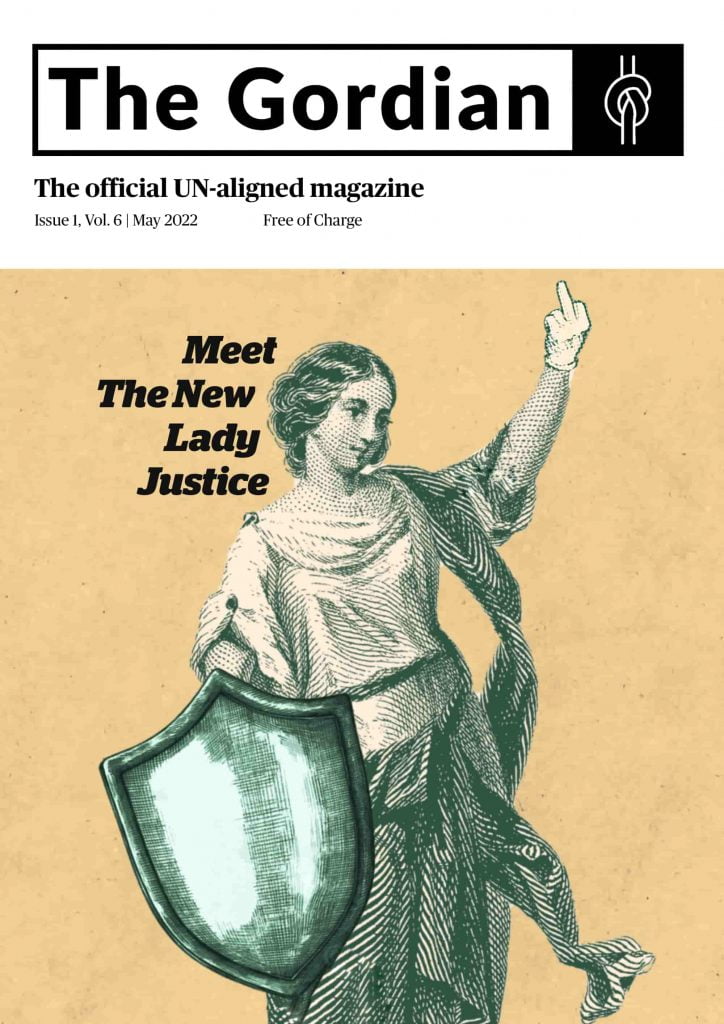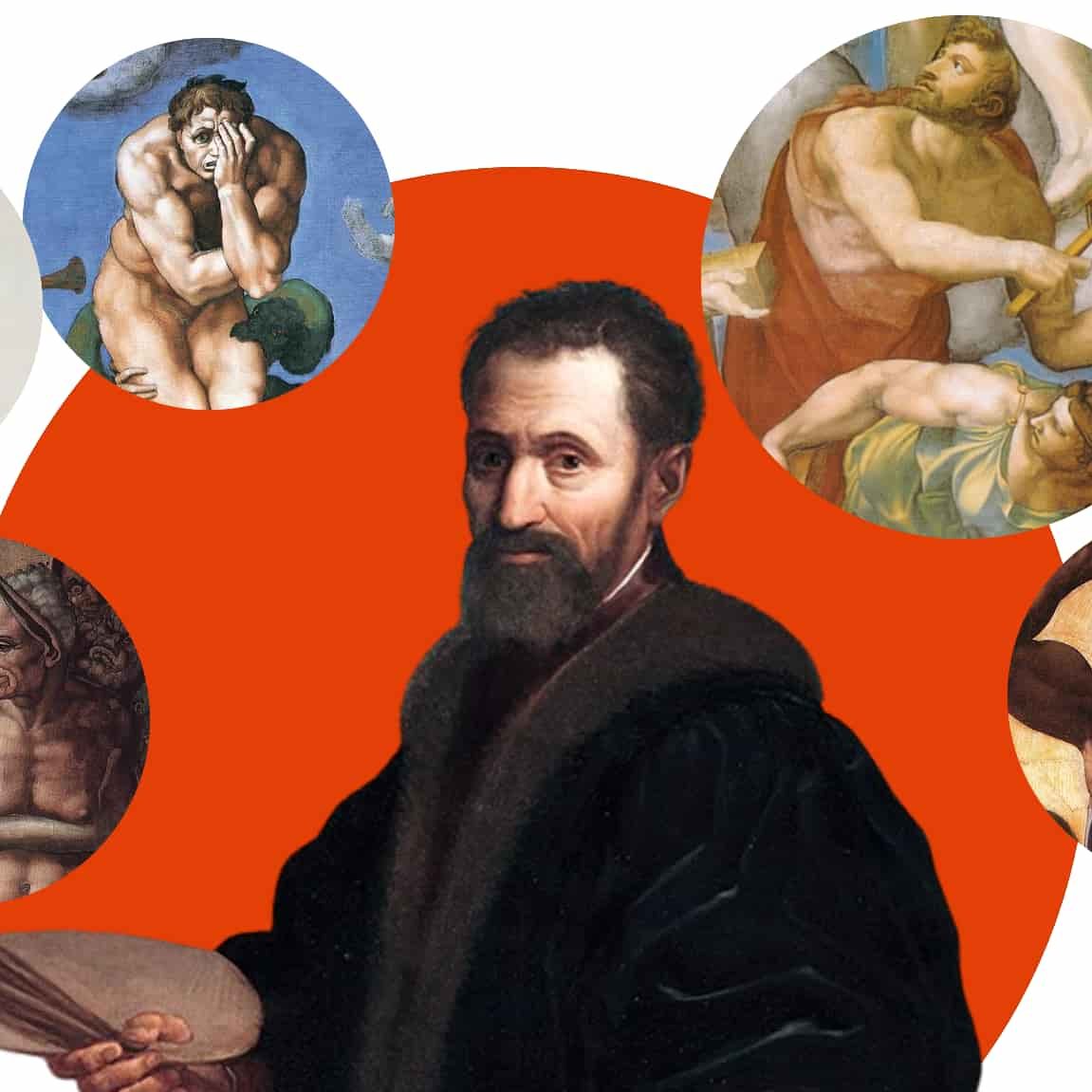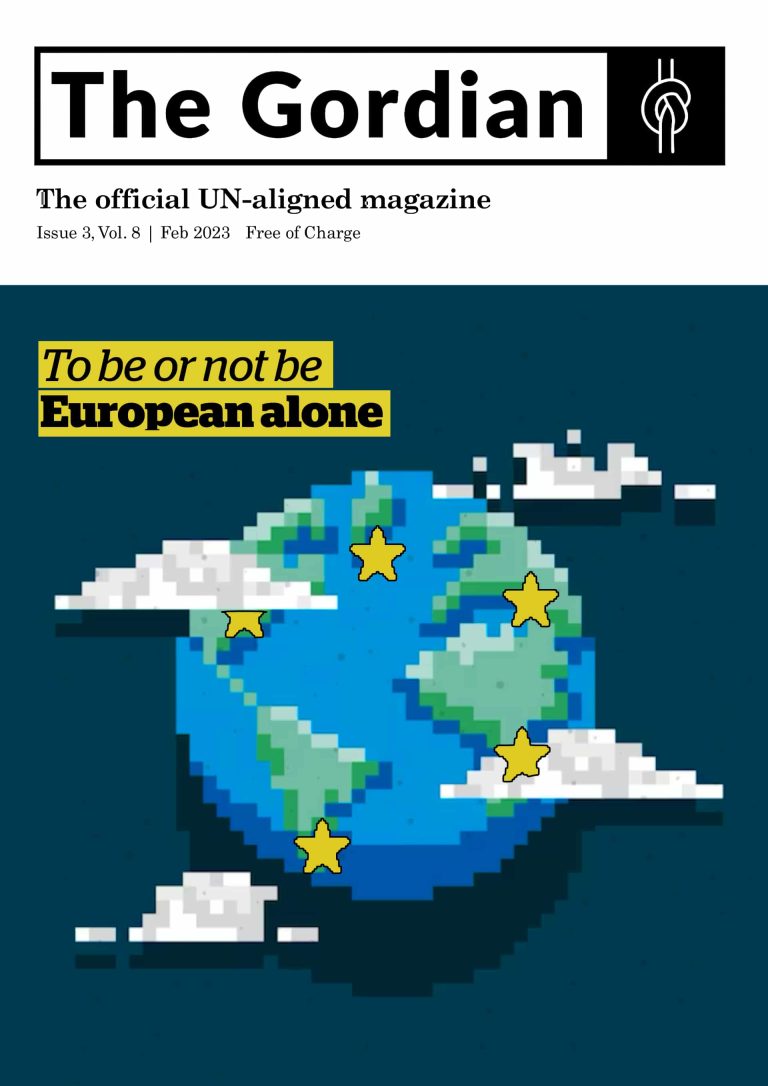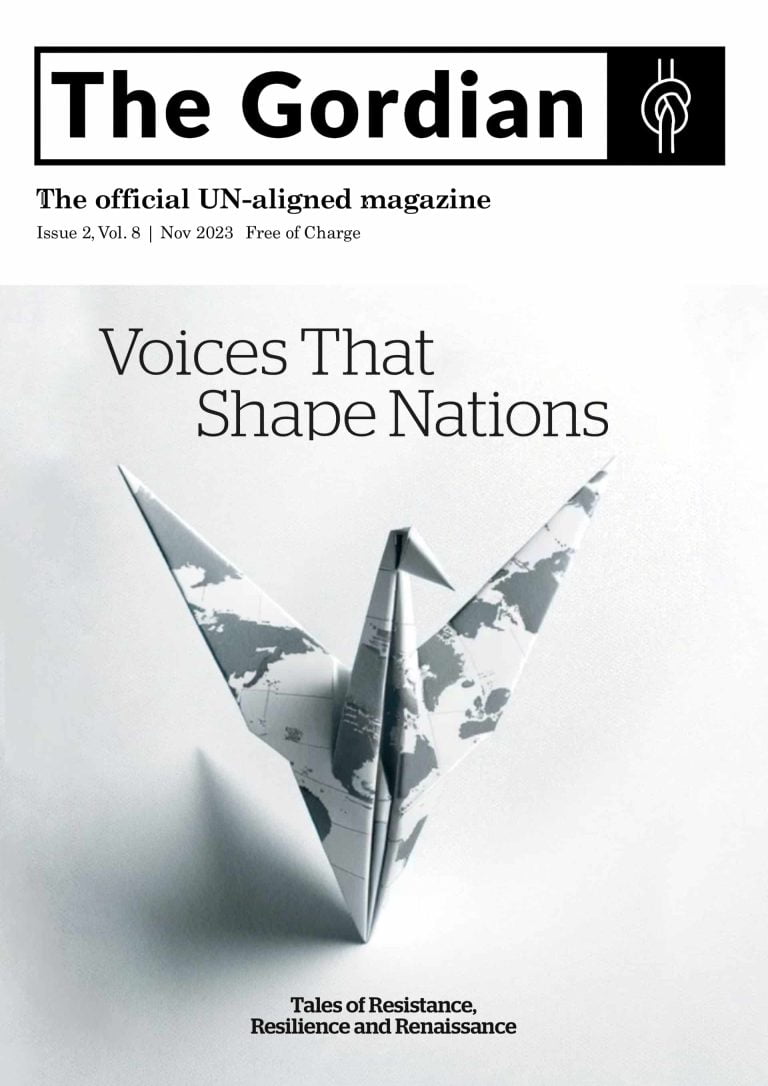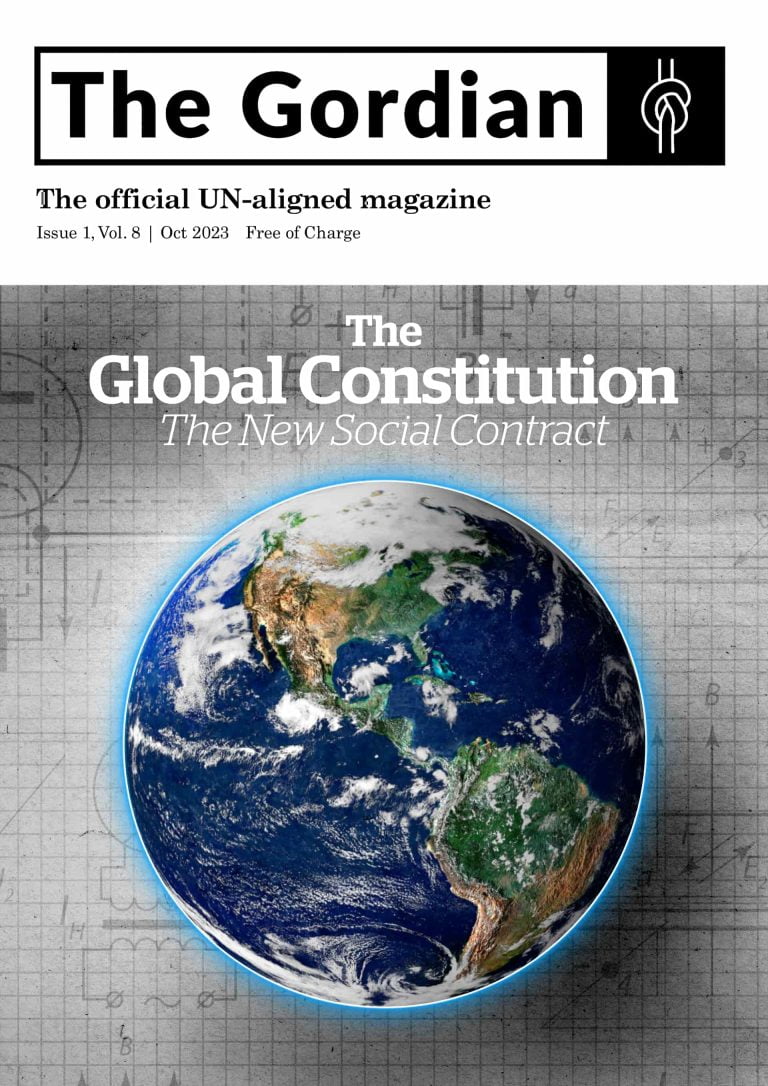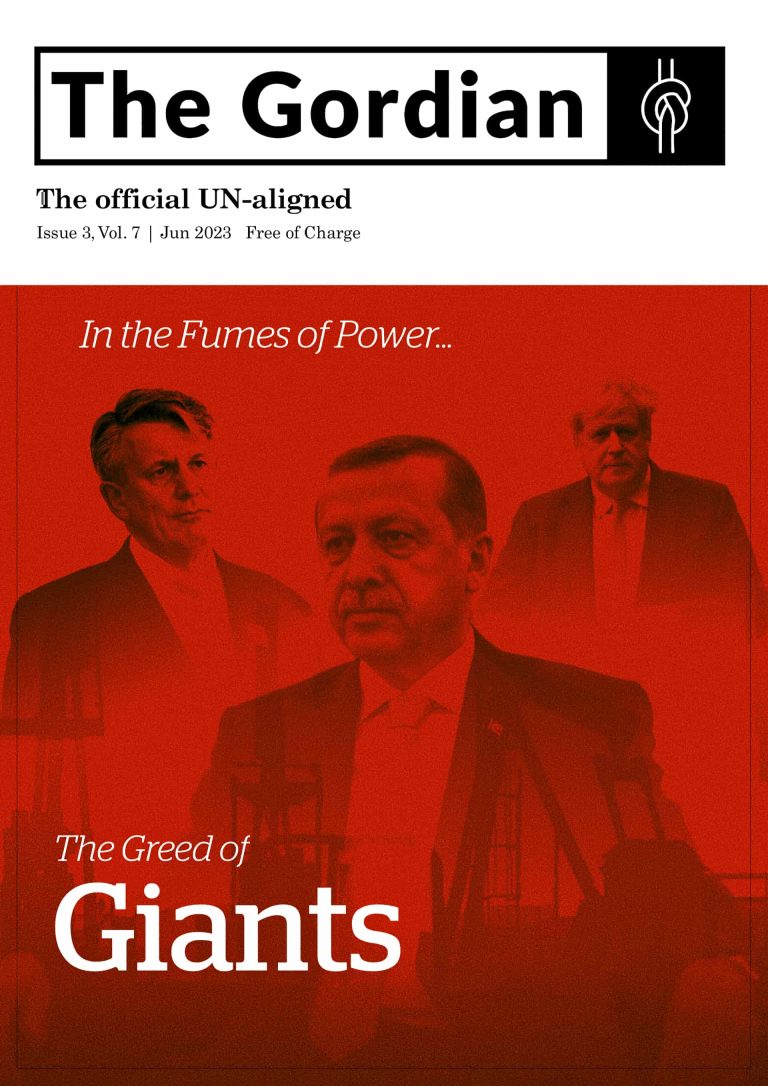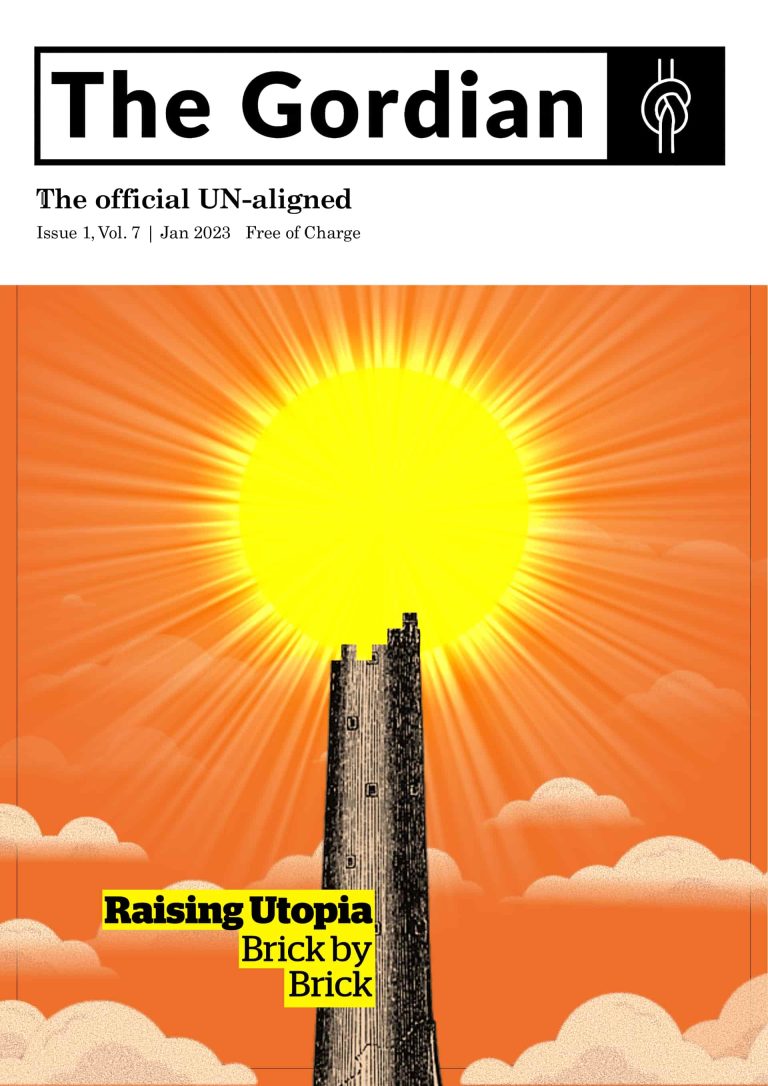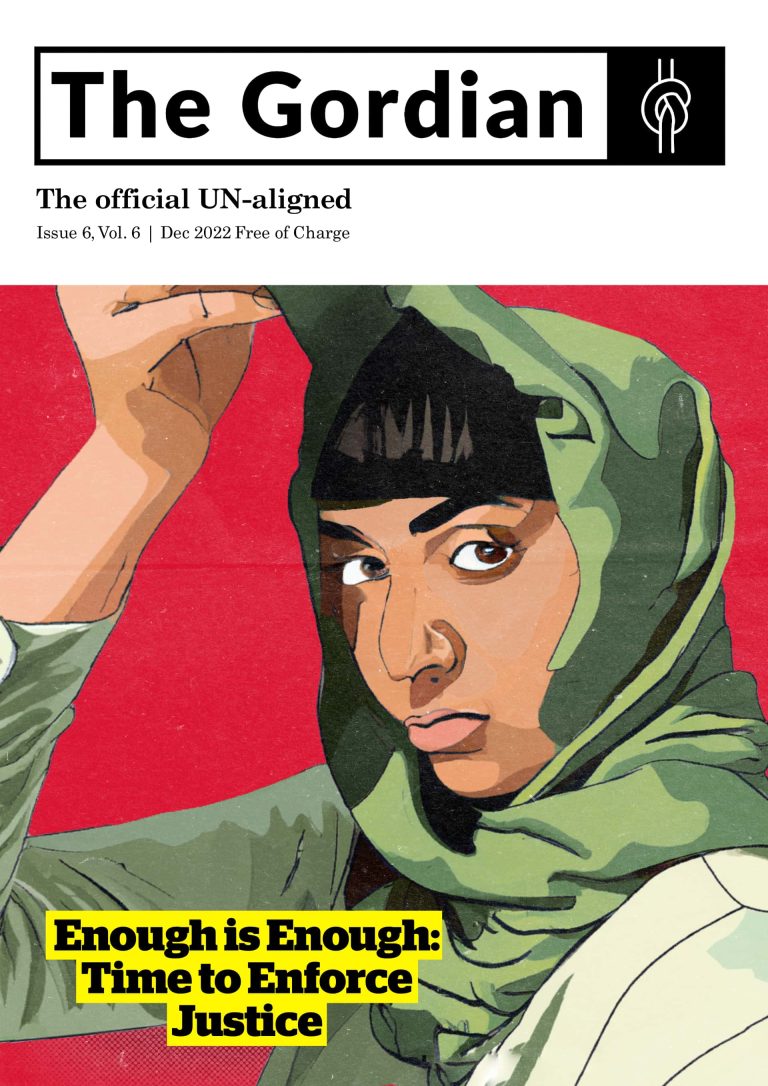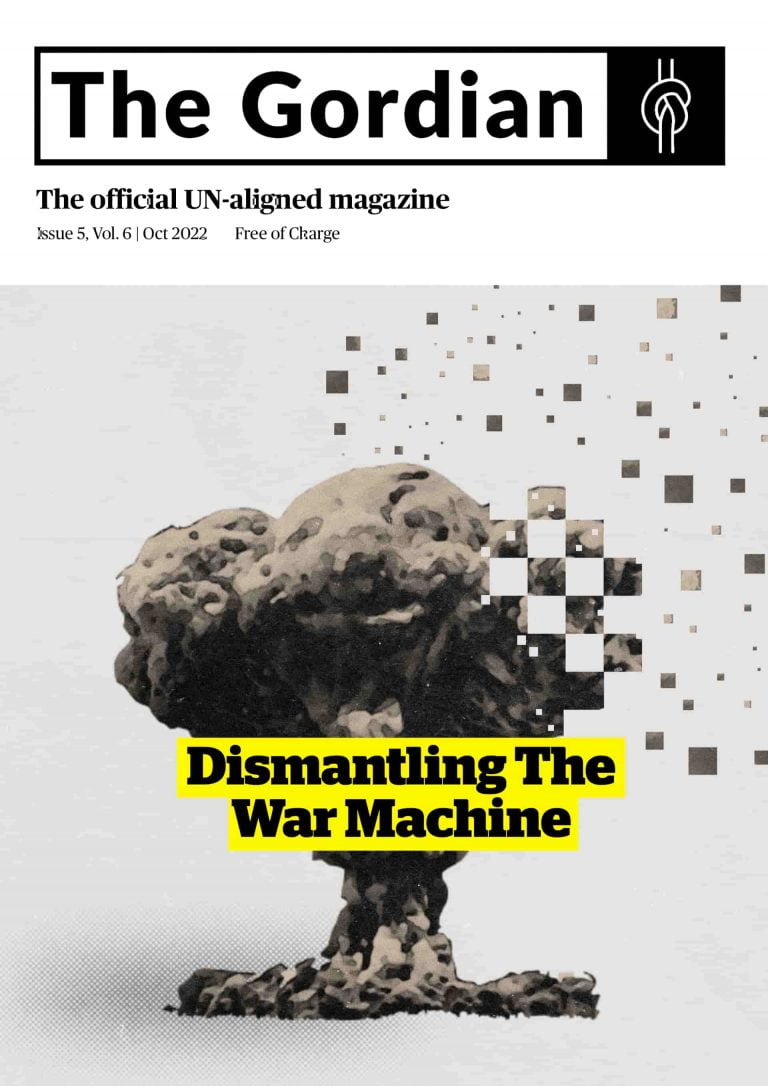Letter from the Editors
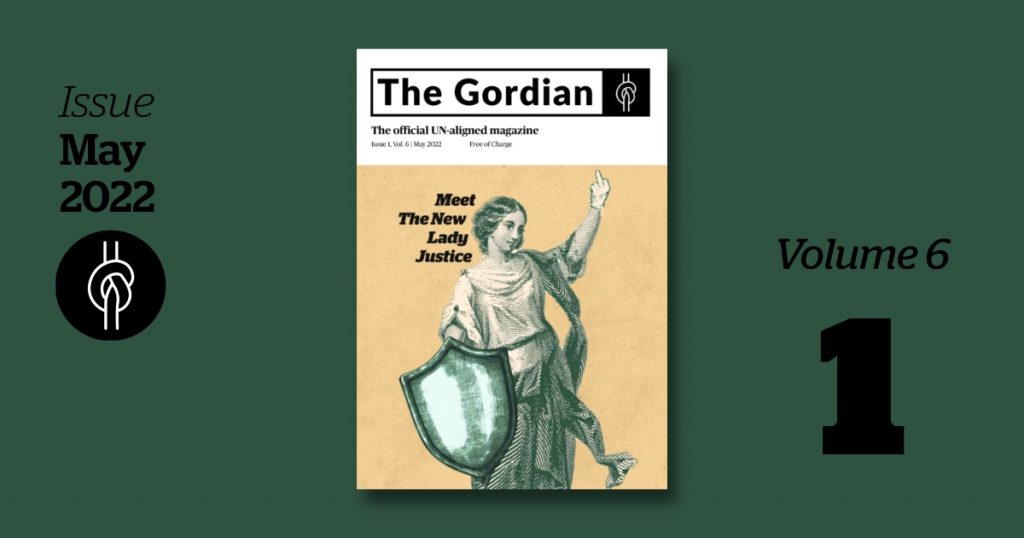
Welcome to the May 2022 issue of The Gordian.
It is largely accepted that Lady Justice’s blindfold symbolises impartiality. Despite the accepted wisdom however, one cannot help comparing the blindfold to that of “blind” Fortune, whose largess is purely random. How else can there be so much injustice in the world?
In our cover article “The new Lady Justice with an eye on Ukraine”, Adrian Liberto addresses a failing world order and exchanges Lady Justice’s appearance for one that is more suitable to the needs of modern times.
Continuing this volume’s topic of law and order, Ariana Yekrangi writes about the three United Nations conventions on the laws of our seas and how they are failing to secure it.
The UN in Focus column contains two more briefs about Antonio Guetteras’ humiliating day trip to Kyiv and the UN’s announcement regarding the launch of a Global Response Group to target food, energy and finance.
As the Ukrainian invasion enters day 75, Aryan Yekrangi writes about the difference between Russian and Ukrainian, which are often mistaken as the same language, especially by people who have no prior exposure to Slavic languages. This confusion, Aryan explains, is justified considering that both Russian and Ukrainian use the Cyrillic alphabet, and they both belong to the East Slavic language family.
In the backdrop of global warming, habitat loss and outbreak of zoonotic diseases, merely ecosystem conservation would not prove sufficient unless bolstered by environmental remediation and restoration, writes Partho Pratim, UN-aligned’s newly-appointed climate and environmental advisor.
And finally, our culture and entertainment column occupies four pieces. UN-aligned’s literary editor, Alex Liberto, introduces E. M. Forster’s life and works; art editor, Carla Pietrobatista analyses Michelangelo Buonarroti’s last judgement; senior photographer, Anahita Ahmadi, offers a gallery on water shortages on the outskirts of Nairobi; while the Gordian’s fun-loving puzzle creator, Katha Wüstnienhaus, teases our brains with her monthly quiz.
We hope you enjoy these stories and the many more in the following pages.
Letters to the Editors
By a Ukrainian reader of the Gordian

War! Russian troops are destroying our cities. Civilians are killed indiscriminately. Women are raped. Children are being abducted. Hospitals and residential areas are being blown up… That is why more than four million Ukrainians are forced to flee Ukraine to other countries, saving the lives of children.
First of all, I want to thank the world for its support and assistance to Ukraine. To thank the states that are now receiving and helping Ukrainian refugees. Thank everyone for their support and help to Ukrainians.
Separately, I want to thank the Italian people for their support and reception of Ukrainians. Thank you Mayor Tagliacozzo Vincenzo Giovanniorio, thank you to the Red Cross, thank you Michela Fell and Corrado, thank you Adrian Liberto. I wholeheartedly thank each of you for your housing, for your support, for your help, for your understanding and for your sensitivity.
Your help will forever remain in my memory and heart. Thanks Italy! Glory to Ukraine! Glory to heroes!
Valentina
Monthly recap: What you may have missed
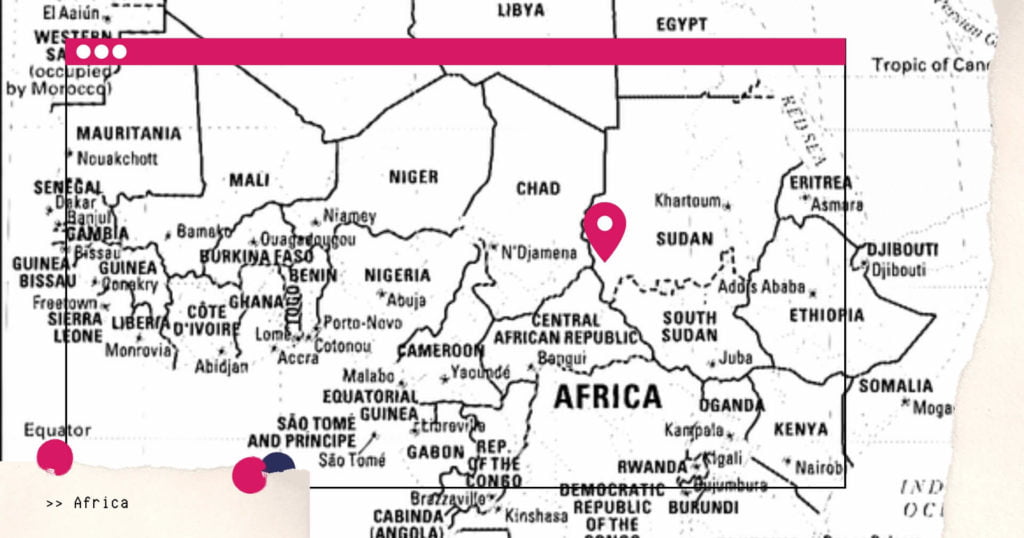
Quickly catch up with everything you may have missed in April 2022
The new Lady Justice with an eye on Ukraine
By Adrian Liberto
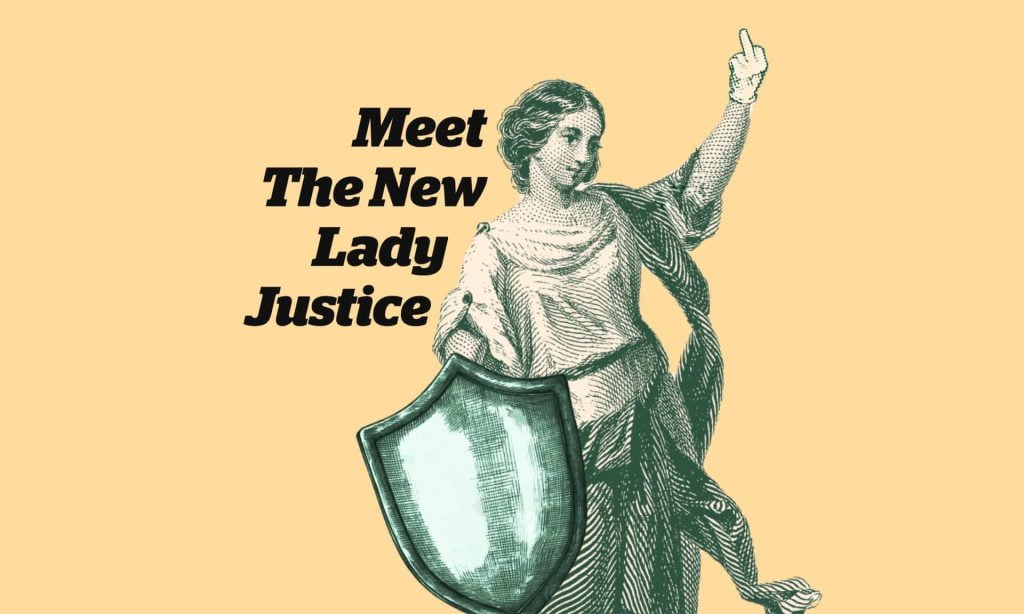
Lady Justice
Have you ever wondered why representations of Lady Justice depict her in a blindfold? The accepted explanation is that the blindfold symbolises impartiality. Lady Justice is supposed to be oblivious to power, status, wealth or any other privilege. She also sports scales, which represent fairness through the weighing up of the facts, and a sword, which represents swift and thorough retribution. Although the scales date back to her earliest manifestations as the Egyptian goddess Maat, the blindfold probably originated with Hans Gieng’s 1543 Gerechtigkeitsbrunnen (Fountain of Justice) in the Old City of Bern. Despite the accepted wisdom, however, one cannot help comparing the blindfold to that of “blind” Fortune, whose largess is purely random. How else can there be so much injustice in the world?
Sadly, from the earliest times, justice has been understood in purely dualistic terms. The idea of “an eye for an eye and a tooth for a tooth” dates back to the earliest codes of law. However, no matter how many guilty eyes one may put on one side of the scales, they will never account for one innocent one on the other. As long as innocent people, or even animals for that matter, are treated unfairly, justice will always be elusive. At its best, this justice is just a deterrent or a reckoning for those who espouse evil, at its worst, it is merely a hope for a retribution that may never come to pass.
As a rule, prevention is better than cure, but death has no cure, so prevention is the only real option.
The same goes for a lot of things which time buries, but does not erase… a simple act of unkindness, for instance. So, what sort of justice can Ukrainians hope for? A deliberately blind justice with rusty scales and a vindictive sword, or a dynamic justice that aims to stop the atrocities from happening in the first place? I ask the question in the backdrop of mass murder… genocide, even. I ask it as international criminal investigators sift through carcasses, while not far behind their backs, fresh ones are being made. Even if Vladimir Putin and some of his cronies do end up before an international criminal court before they are too old to even care, would that bring back the dead, the lost limbs, the peace of mind and the broken homes? Would belated justice cleanse the surviving children from the memory of the living hell they had been forced to witness? No, of course not. So bureaucrats should not call their travesty of Justice, justice. It is no more than a bandage on a wound that will not heal and a little revenge in the hope of deterring further blows in the future.
Shameful self-interest
Justice is inexorably linked to human nature. If I drown in rough waters, that is not injustice, but if I am pushed, it is. However, it is also injustice if you let me drown when it is in your power to save me. Ukraine is drowning and we are letting it drown. Worse still, we are making the situation for Ukraine worse by our flimsy institutions (the United Nations prime amongst them), our gormless policies of appeasement and our unwillingness to stop financing Putin’s war machine by paying him 1 billion euros or so a day for his bloody oil and gas. The situation is tragic, but as long as international justice is left in the hands of nation states it will never improve because self-interest will always win the day.
Why nation-states cannot be trusted with international justice
Just look at the scandalous April 7 UN vote on whether or not to evict the Russian Federation from the Human Rights Council. Out of 193 nations, only 93 voted to expel Russia despite gross human rights violations, including genocide. 58 countries abstained, 18 were absent, while 24 actually voted against.
To put this in perspective, it is worth taking a closer look at Africa and Asia. Out of 54 African countries, only 10 voted in favour of the motion, of which three are Island States (Comoros, Mauritius and Seychelles) and therefore less likely to be influenced by mainland politics. This is nothing short of an insult to the most sacred of human rights: the right to life.
The situation in Asia is even more alarming. Out of 48 Asian countries, only 6 voted in favour, and of those, three are Island States (Philippines, Timor-Leste and Japan), one is Turkey, which is partly in Europe, and one is Myanmar, whose ambassador to the UN does not represent the current regime in his country, as he stayed on after the coup despite threats to his life. If the vote had required the approval of half of all United Nations members, it would have failed by eight votes. I would hardly call this an overwhelming endorsement for human rights.
Addressing a failing world order
This leaves us with two options. The first is to hit our head against the wall, until we are too braindead to care; the second is to admit that the existing world order is terminally flawed and incapable of meeting the needs of humanity as a whole and that therefore we should be doing something about it. This may sound like a very tall order as humanity is what it is and it cannot be changed overnight. Well, it does not have to. The important thing is that it is on the right track. At first sight, the situation may appear as a chicken and egg dilemma: people need sound institutions in order to flourish in a civilised manner, but at the same time these institutions cannot create themselves, nor can they be created by thoughtless or narrow-minded people. However, the reality need not be that complicated because there are already enough people around the world with an understanding of human rights and the will to defend them.
The problem is that the world’s foremost organisation, the United Nations, has had the few clear and worthy principles it stood for hijacked by its nation states. I am not only talking about permanent Security Council members, like the Russian Federation, but the organisation as a whole that would allow the desecration of any human right as long as enough member states were in favour of the violation. I have discussed the flaws of the United Nations at length in my book Unravelling the United Nations, and the weaknesses of international courts in my article on the ICJ and the ICC; I have also proposed some solutions, so I will not revisit these here. I will therefore move on to getting on that right track.
As mentioned above, a fair amount of people do understand human rights and they are willing to do what it takes to promote and implement them. These people understand that values are more important than power.
A United Nations with only two member states that adheres to principles of fairness and human rights is worth infinitely more than a United Nations with 193 countries that forfeits its principles for self-importance, self-interest and power.
In fact, even a United Nations with no member states at all would also be better. UN-aligned, with its members from all over the world, is such a united nations. Our members have made a stand as they are not prepared to be complicit in the betrayal of human rights and justice. Ethical principles may not make an organisation powerful, but they make it worthwhile. Power can come later, and of course it will have to for the organisation to have the ability to effectively safeguard peace and justice, but unless integrity comes first, power will always be a liability.
Rehauling Lady Justice
This takes us back to Lady Justice, with her blindfold, toga, scales and sword. As a symbol, I believe she has failed to represent true justice adequately: she needs an overhaul… First of all, her blindfold needs to come off. She has used it to turn a blind eye to self-interest, like political expediency and Russian oil. She needs to see clearly and in doing so she would not need her cumbersome scales. Next, she needs to be naked and transparent. Purity and courage has nothing to hide and courage is crucial for justice because she does not hide behind borders and treaties. Finally, her sword needs to be dropped and replaced by a shield, for protection is more important than vengeance. The sword can be handed to the Furies: let them worry about punishment; it only serves as a distraction for justice. Of course, seeing as the shield is defensive, it also involves armies, such as the ones we should be giving to Ukraine to stop the slaughter, but protection not aggression is the key. This leaves her with a free hand: what about a middle finger to the likes of Putin?
The three UN conventions on the laws of the sea and how they are failing to secure it
By Ariana Yekrangi
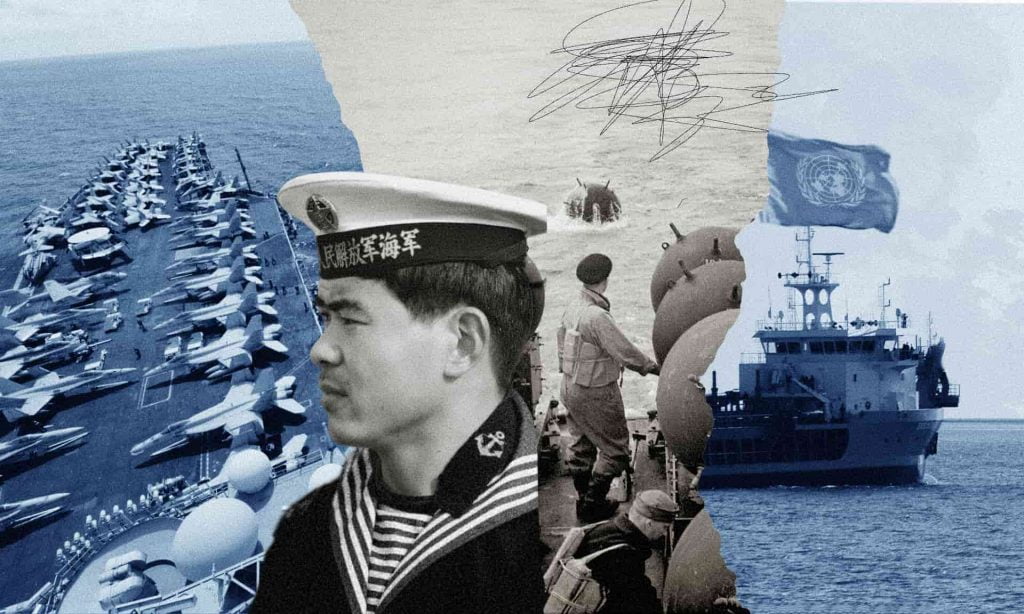
In this article, we will explore the three UN conventions that are designed to protect the laws of our seas: the UNCLOS, the ITLOS and ISA.
1. What is the United Nations Convention on the Law of the Sea?
In 1982, the third United Nations Convention on the Law of the Sea (UNCLOS) was adopted after nearly 26 years of attempts to replace the archaic “freedom of the seas” concept, which dated all the way back to the 17th century. The convention came into force in 1994 and established rules governing the uses of the oceans and their resources. Essentially encapsulating traditional rules for ocean use in a single instrument while also introducing new legal concepts, as well as addressing new concerns that arose with modern times. Some notable developments ushered by the convention include:
- The formation of 200 nautical miles of Exclusive Economic Zones (EEZs) over which independent nationstates have the sovereign legal power to explore and utilise the sea.
- Anything beyond the EEZs is defined as the “high seas” and classified as the “common heritage of humankind”. (See the section about ISA).
- Introducing a 12-nautical-mile zone (about 22 Km) around coastal states, which the convention sanctioned as “territorial seas”. Within these territorial seas “innocent passage” of other ships including warships are allowed.
- Establishing a dispute resolution mechanism for nationstates (we will discuss this shortly in the section about ITLOS).
Of course, one can easily claim that the convention complicated, rather than simplified, maritime law and security. The introduction of the EEZs, one can argue, is certainly one of the complications of the convention.
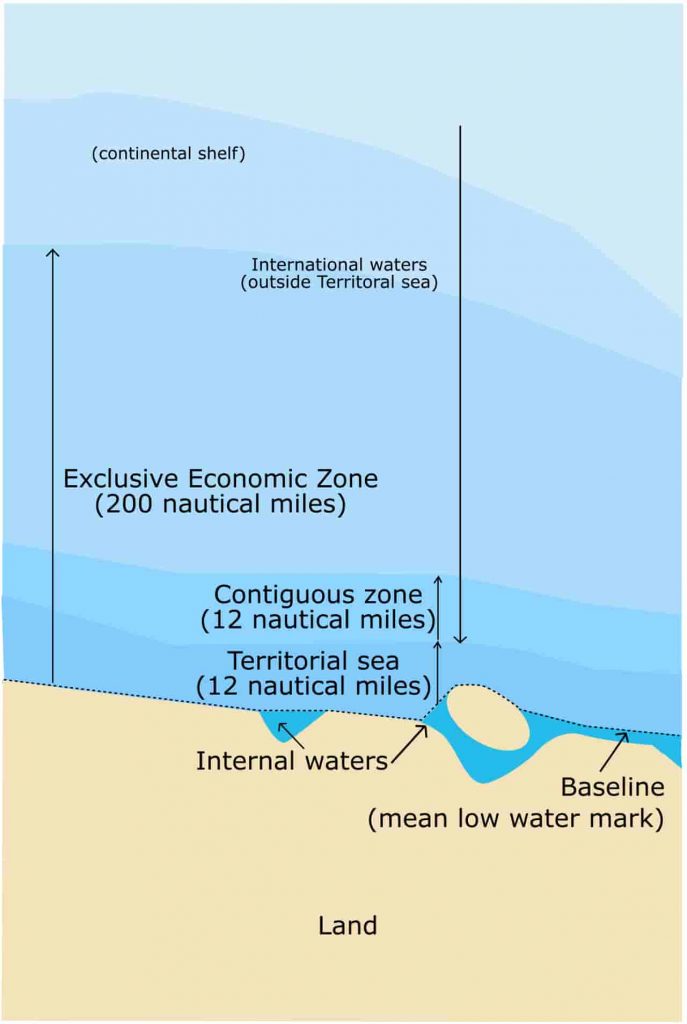
Naturally, oceans don’t align with arbitrary borders that nations draw, in the case of overlapping EEZs, UNCLOS simply leaves the matter to be resolved by the nationstates themselves. Moreover, the EEZs end up favouring countries with the most coastal borders, such as the UK, France, Indonesia, Brazil and Australia.
Many also argue that the division of the sea has no proportionality to the population of the country. This has left a country like New Zealand with a population of around five million with 4.1 million sq km while China, which has a population of 1.3 billion, with around 900,000 sq km.
At least most nationstates are signed to the convention, right? You will be glad to know that the majority of the UN’s member states have signed onto UNCLOS. To date, the convention has been signed by 189 UN member states plus, the UN Observer state Palestine, the Cook Islands, Niue and the European Union, so 193 signatories overall.
Most large military powers, including the permanent members of the UN Security Council – besides one, which has not yet ratified it – are signatories to the convention. I know what you may be thinking: It’s the same country that claims ownership over everything within its “nine-dash line”, stretching from Taiwan to Malaysia. No, it’s not China, but rather the United States.
Although the US was pivotal in establishing the convention, to date, the country’s senate has refused to vote for the US to ratify it. Many Republicans continue arguing that UNCLOS threatens their “national security” by interfering with US’ ocean military operations and hindering seabed mining corporations by imposing “unnecessary” environmental regulations. This leaves the United States, without the moral authority when it comes to lecturing countries, like China, regarding the laws of the sea. Besides the US, there are also some countries that have not signed, nor ratified the agreement. Some of these are: Turkey, Israel, Kazakhstan, Peru, The Holy See, Syria, Tajikistan and Venezuela.
Who supervises the convention and what powers does it have? UNCLOS is not overseen by the United Nations Secretary-General. Supervision of the convention falls under the job description of the Division for Ocean Affairs and the Law of the Sea (DOALOS) of the Office of Legal Affairs of the United Nations. Regarding what powers the convention realistically has, UNCLOS does have a tribunal, but that’s a whole other can of worms. Let’s open it, shall we?
2. What is the International Tribunal for the Law of the Sea (ITLOS)?
Created and established by UNCLOS in 1994, The International Tribunal for the Law of the Sea consists of 21 judges selected through a secret ballot by participating states. Binding settlements through an arbitration panel or an international court is one of a number of procedures that signatories are presented with when attempting to resolve competitive interstate issues. Some of the other mechanisms for resolving differences include:
- Bilateral negotiations,
- Non-binding third party settlements such as good offices and conciliation,
- Mediation.
Throughout its history, ITLOS ruled on several high-profile cases. One of these relates to the disputed territory of Diego Garcia.
The UK versus Mauritius case: In spite of the fact that the Chagos Archipelago received its independence in 1965, the UK refused to accept the decision. In true colonial spirit, it proceeded to deport all of the 1,500 residents of its largest island, Diego Garcia and set up a US/UK military base. The UK stripped the island of its name and called it British Indian Ocean Territory. In 2019, the ITLOS, later backed by the International Court of Justice (ICJ) and the UN General Assembly ruled that: “The United Kingdom was under an obligation to bring to an end its administration of the Chagos Archipelago”. To no one’s surprise, the UK government immediately made it clear that it would disregard the verdict.
The Netherlands versus the Russian Federation: Another story relates to the Arctic Sunrise, which was the name of a vessel operated by Greenpeace. In 2013, after it became clear that Gazprom, a Russian state-owned company, who was in charge of the oil extraction in the area, was not prepared to deal with a spill linked with oil extraction, Greenpeace and the Arctic Sunrise staged protests against the Prirazlomnaya oil rig. However, the situation escalated after three crew members of the vessel attempted to board the platform. The Russian coast guard responded by seizing control of the ship and detaining all the crew. All 30 activists were initially charged with piracy, which could have carried a sentence of fifteen years of imprisonment, however, the charges were later downgraded to hooliganism, which carried a lesser sentence.
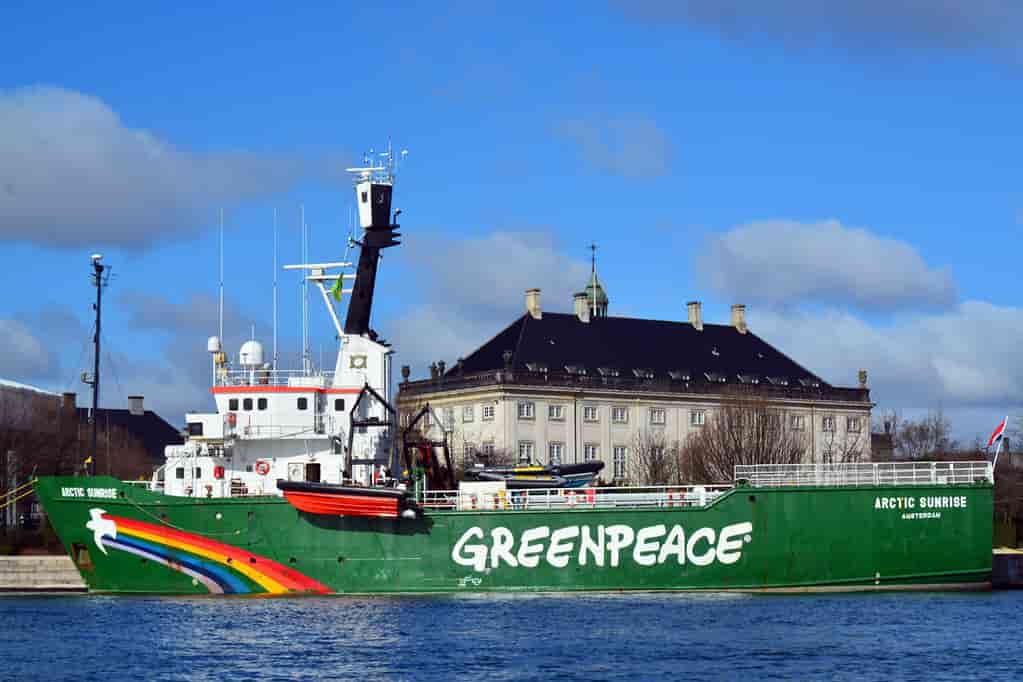
The Netherlands subsequently brought the case to the ITLOS demanding the immediate release of the activists and the Arctic Sunrise. Even though the Netherlands’ claim was supported by fact and law; Russia refused to participate in the tribunal as it saw the matter as one relating to its own internal law. On November 22nd, the ITLOS decision dealt a blow to the Russian Federation, ordering Moscow to release the Arctic Sunrise and its activists.
The Russian Federation refused to follow the verdict, another hammer blow to the authority of the court. Nevertheless, the crew and the Arctic Sunrise did end up being pardoned during the celebration of the 20th anniversary of Russia’s post-Soviet constitution.
The Philippines versus China case: The Arctic Sunrise Case shares a lot of similarities with the case of Philippines versus China, who claims 90% of the South China Sea. The tribunal’s Arctic Sunrise decision was closely watched and scrutinised by China’s leaders who also refused to participate in an UNCLOS challenge brought by the Philippines over maritime claims in the South China Sea.
The ITLOS ruled that “although Chinese navigators and fishermen, as well as those of other states, had historically made use of the islands in the South China Sea, there was no evidence that China had historically exercised exclusive control over the waters or their resources.” The tribunal concluded that there was no legal basis for China to claim historic rights to resources within the sea areas falling within the ‘nine-dash line’. In 2016, China’s government refused the tribunal’s verdict.
You may be sensing a pattern by now. As you can see, within the last decade alone, three of the signatories to the convention refused to accept the ITLOS ruling. This exposes the weakness of the Court in as much as it depends on goodwill and the willingness of the parties involved to comply with the rulings.
This does not mean that the court is useless. The ITLOS does have a number of successes, but this is only because both parties decided to accept the court’s jurisdiction and compromise. The United Nations is no stranger to kangaroo courts and decisions at the ITLOS, the ICC and even the ICJ will continue to be disregarded as long as there is no mechanism to enforce international law. Well, what can be done? Here are some solutions toward comprehensive global justice.
Now, how is the United Nations prepared to save our oceans from the greed of corporations and what does UNCLOS exactly mean when it says that “high seas” are classified as the “common heritage of humankind”?
3. What is the International Seabed Authority (ISA)?
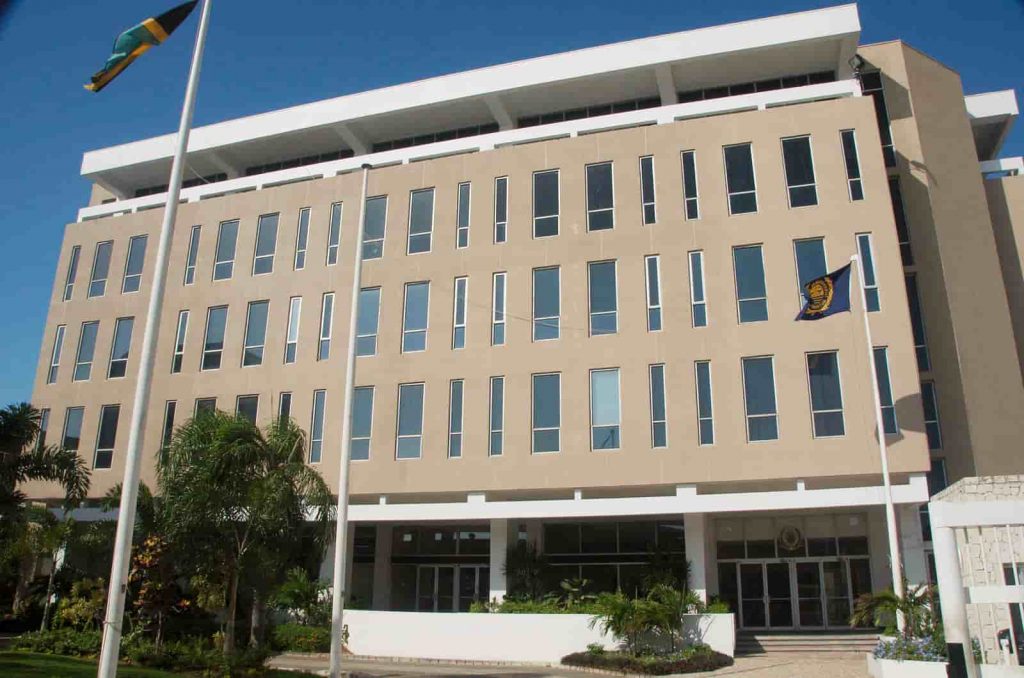
Technically made up of the EU and 167 countries, the International Seabed Authority (ISA) was established by UNCLOS itself in order to regulate, organise and control through licences and contracts with companies and governments, all mining explorations.
Remember, according to UNCLOS, each country could only explore and exploit an area within 200 nautical miles of its coasts to mine. If a country, corporation, association or even private individual wants to exploit the high seas, or as the convention calls it “humanity’s common heritage” they need to ask for a permit.
This was the case with Nauru and The Metals Company (TMC). Earlier this year, scientists and environmentalists warned of a massive ecological tragedy that could result from planned deep-sea mining in Nauru, where the Nauru Ocean Resources, a subsidiary of the Canadian firm TMC, wanted to mine the nodule-rich region.
But all should be well. Isn’t the regulatory body supposed to protect our seas, you know, like the police would? Well, sadly, more like corrupt police.
There are no specialised environmental or scientific evaluation groups vetting new contract applications. Once an application is sent to ISA, it is processed by the body’s Legal and Technical Commission (LTC), which consists of only 30 members, most of whom work directly for contractors with deep sea mining projects.
But surely they can’t just approve every application: Get this: to date, the body has a 100% record of approving cases. Oh, did I forget to mention that each application costs half a million dollars?
When the General Assembly of the UN approved the budget for the body, it stated that the shared heritage should be dealt inline with “the growing reliance on market principles”. This should have been the first giveaway: since when has the market cared about humanity’s shared heritage? Well, never.
Chasing the unassuming treasures under the sea may seem attractive, but being the kind of self-interested pieces of garbage we humans are, we rarely think about the consequences of our actions and how they affect our environment.
The concept of mining the sea is not an issue by itself. After all, getting our nodules, which we use for our battery-powered electronics, out of the sea, could be more sustainable than onshore mining. Fishing our resources out of the deep sea could potentially solve climate change.
The problem here is that we are quite literally dealing with uncharted waters. While corporations claim that they are meeting the need to transition to a more sustainable economy, many scientists and activists worry about the irreversible impact deep sea mining could have on our ecosystem.
Luckily, the World Congress of the International Union for the Conservation of Nature has, through a non-binding vote, declared that it is attempting to ban deep sea mining. It also plans to appeal against the Nauru and TMC case to the International Tribunal for the Law of the Sea. To whom? Oh!
As yet, there is no proper Global Ocean Treaty that aims to seriously protect the “common heritage” of the High Seas. Those that do exist, really do anything but protect this heritage.
There is no doubt that there are many well-intentioned people working for the UN, but most regulations regarding our seas are skewed towards a flexible or soft treaty that gives priority to economic exploitation over environmental concerns.
UN in Focus
Gutterres’ visit to Ukraine: Another blow to the UN
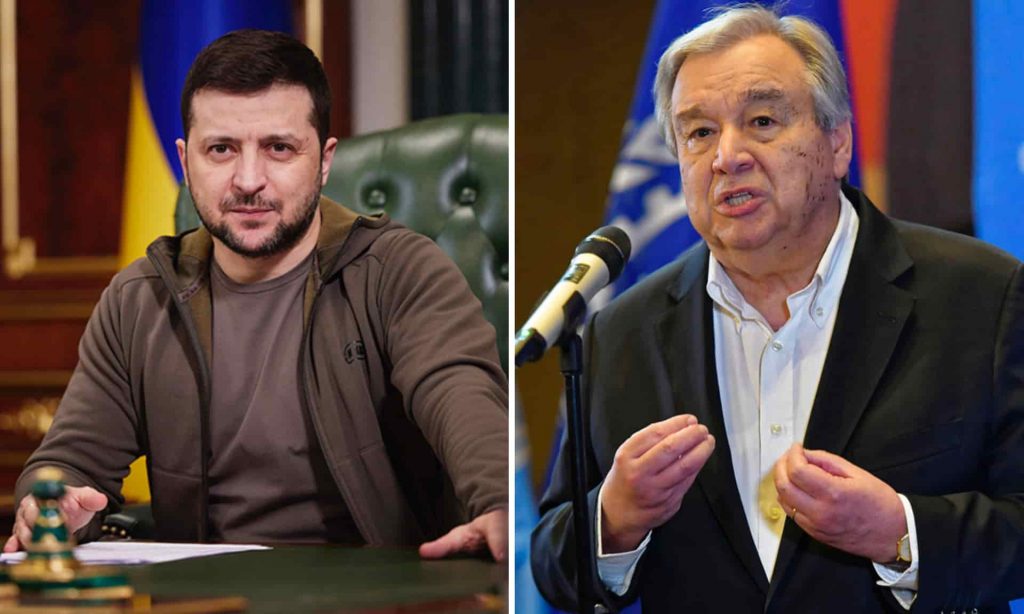
On 28 April, UN Secretary-General António Guterres visited Kiev directly after an official visit to Moscow. His tour included sites of suspected war crimes in Ukraine, namely the suburbs of Borodianka, Bucha and Irpin. Guterres did not hide his horror and indignation, nor did he mince his words:
“When we see this horrendous site, it makes me feel how important it is [to have] a thorough investigation and accountability... I appeal to the Russian Federation to accept to cooperate with the International Criminal Court.”
Initially, Guterres had been criticised for visiting Moscow before Kyiv, but in retrospect it became clear that his frank assessment would have been harder to voice if it were to be followed by a meeting with Putin. Of course, this did not stop Putin from blasting the Secretary-General anyway: not figuratively, but literally by bombing Kyiv during the high-profile visit. The message was loud and clear and President Zelensky summed it up nicely:
“This says a lot about Russia’s true attitude to global institutions, about the efforts of the Russian leadership to humiliate the UN and everything that the organisation represents.”
In January, a few weeks before the invasion, Guterres was sceptical about the likelihood of an invasion, despite the warning signs and the unequivocal assessment of the situation confirming an imminent attack by Russia made by the US. Answering a question by Al Jazeera journalist, James Bays, about the possibility of an imminent invasion, Guterres said: “I am convinced it will not happen, and I strongly hope to be right.” Well, he could not have been more wrong, but there is little he can do about it now, or could have done then, for that matter. The UN is not led by principles, but by States that regularly flout the most basic standards of decency. Guterres is not directly to blame; the institution is, and anyone who has the power to change it, but chooses to sit idly by as atrocities are committed. This includes Guterres, of course, and all Heads of State, from the Pope to the President of the United States.
The United Nations mobilises to tackle a looming global crisis
On April 13, the UN launched a Global Response Group to target food, energy and finance. According to the organisation, the prospects around the world are dire:
“The war in Ukraine has a ripple effect on the world’s food, energy and finance sectors. Because of the impact on these sectors, the conflict risks tipping up to 1.7 billion people — over one-fifth of humanity — into poverty, destitution and hunger.”
The repercussions from Russia’s invasion of Ukraine are all the more worrying as they follow in the wake of the already devastating COVID-19 crisis. In the words of United Nations Secretary-General António Guterres: “We are now facing a perfect storm…”
Although the UN is powerless when it comes to stopping one of its lead members from causing the disaster, it is doing its best to mitigate the consequences. The Global Response Group will be supported by six world leaders, including Barbados Prime Minister Mia Mottley, German Chancellor Olaf Scholz and President Macky Sall of Senegal.
Whilst the initiative may help by juggling and maximising resources, the emphasis should clearly be on stopping the war and eliminating the cause, rather than tending to the symptoms.
Making environment and development go hand in hand
By Partho Pratim Chatterjee

Remediation and restoration
In the backdrop of global warming, habitat loss, outbreak of zoonotic diseases etc. merely ecosystem conservation would not prove sufficient unless bolstered by environmental remediation and restoration. Terrestrial ecosystem restoration can be augmented with novel afforestation techniques like Miyawaki method thereby increasing biodiversity along with sequestering greenhouse gasses. Marine ecosystems can be restored by techniques like Floating Solar PhotoVoltaics, offshore wind farms, wind-Solar hybrids and powered Biorock accretion techniques followed by the insertion of a living coral in the skeleton to enhance biodiversity in these “rainforests” of the oceans. Oil spills from ships can have a pernicious effect on fragile marine ecosystems.
These can be remedied using bioremediation techniques. This can reduce the plight of vulnerable marine reptiles like Olive Ridley Turtles. Ingenious techniques like Aquaponics, Vertical farming, Mixed farming, Zero Budget Natural Farming, etc. need to be promoted and made ubiquitous. Anti-Methanogenic Feeds could be fed to cows to reduce the emission of methane, a gas with a Global Warming Potential several times greater than Carbon Dioxide. Similarly, use of compounds like Diclofenac which harm vultures need to be phased out. Stringent Environmental Impact Assessment norms need to be promulgated with a tradeoff between Installed Capacity and environmental impact in the case of Hydropower projects located in Environmentally Vulnerable Locations.
Revenue collection and storage mechanisms
Further, revenue collection mechanisms like National Carbon Tax need to be introduced. National Carbon Tax can provide a double dividend: Mitigating Pollution and using the collected amount for ecosystem restoration and livelihood augmentation, where the money is transferred in the form of Direct Benefit Transfer to impecunious households who bear the brunt of environmental degradation and inflation more. National Carbon Tax also helps cleaner fuels like Natural Gas replace polluting fuels like Coal in the power generation Variable Cost Merit Order. Hybrid Wind-Solar farms with high Capacity Utilization Factor could be promoted at the generation level. Small Hydropump based storage units could store excess electrical energy from solar-wind hybrids in the form of potential energy at a height when supply exceeds demand. This stored water can later produce electricity by rotating Kaplan Turbines when demand exceeds supply. As Solar Insolation and Wind speed have a high value during summers, these novel hybrids, when coupled with desalination/ water purification units could prove to be beneficial for tropical countries where the demand for electricity and potable water both surge together during summers.
Additional measures that can be taken to support the environment
Further, Public transport (Railways/Mass Rapid Transit Systems) could be powered by Overhead Electric Cables rather than less efficient Diesel Electric or Diesel Mechanical powertrains. In places where Overhead Transmission Lines pose risk to avifauna like Great Indian Bustard, underground cabling could be preferred. A flexible Nationally Determined Contribution policy where the states can decide the proportion of renewable generation as per their geography could be incorporated. For example, littoral states can opt for a greater share of wind energy in their renewable energy generation mix.
On the other hand, arid states with abundant sunshine can opt for a greater share of solar energy. Recycling of stubble to produce organic manure or biogas can prevent Air Quality exacerbation to a great extent. Further, to ensure the penetration of cleaner fuels like Biogas, biomass could be purchased by the Oil Marketing Companies from the forest dwellers at a fair price. Otherwise, they would continue using the polluting biomass fuel for cooking and not switch to cleaner fuels in the absence of disposable income.
In forest fire prone areas, fire spread increases with wind speed. In these areas, a win-win situation could be to use the wake effect of windmills to reduce wind speed along with producing electricity. Similarly, piezoelectric sensors near sensitive animal corridors could provide the advantage of sending warning signals to Tourists/ Locomotive pilots / Forest Officials/Natives etc. if wild animals are crossing the railway track/highway, averting accidents.
These sensors produce an electrical potential difference when animals pass over them. A variable Environmental Compensation Cess could be introduced in proportion to the quantity of emission of deleterious pollutants and their respective toxicities to discourage their emissions. These measures, if implemented in a techno-economically viable manner could prove to be an elixir for promoting the concepts of a clean and sustainable economy.
- Partho Pratim Chatterjee is the advisor of climate, environment and green technologies at UN-aligned
“No, I wasn’t somebody just to be picked on” — Part 2: My life as a Moroccan child immigrant in 70s England
As told to Ruby Goldenberg
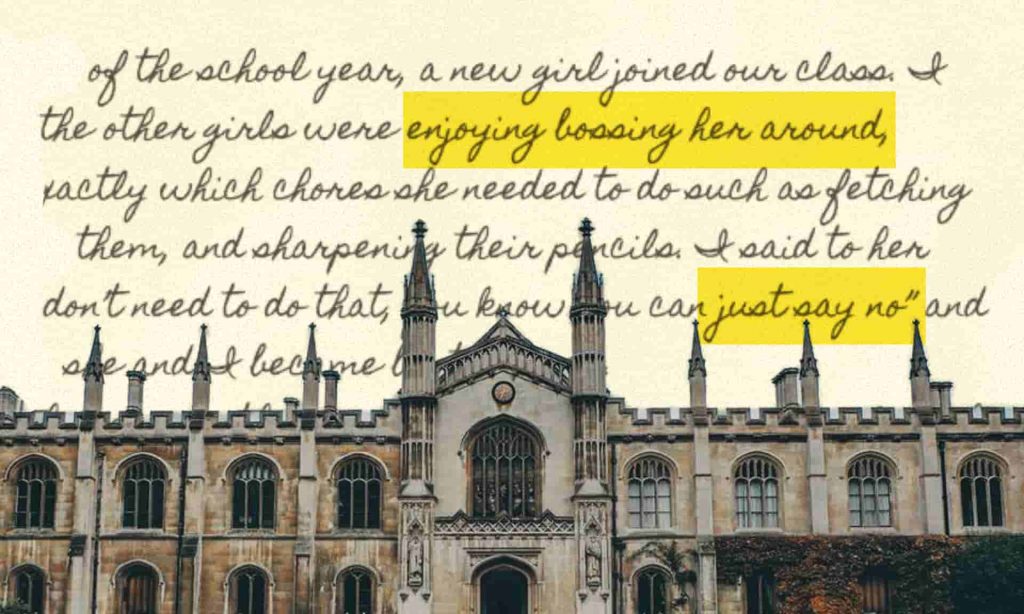
This is the second part of Noor’s story. Noor is sharing her experience as an immigrant child who came to England in the 70s from Morocco. At the time, Noor was still grappling with the English language and finding her place in High School. This article contains strong and racially offensive language.
In 1976 we moved to Poplar in London. One thing I remember is a Saturday market full of hustle and bustle, with working class people grabbing bargains under a wave of brightly coloured merchandise. We had moved into a four bedroomed Maisonette, not far from our new secondary school. We lived amongst a majority white community, but there was one black family who befriended my sister and I.
It was February and incredibly cold. I remember walking to my new school that day with dread and fear twisting inside me. All that I could do was anticipate the worst things that could happen to me at the new school. The thought of having to face 30 children, not understanding much English, and trying to make sense of the school timetable, was nauseating.
The school’s main building was Victorian, and my form room was in a slightly more modern side-building built in the 1960s. In my form class, there was one black child and myself amongst white children, so, needless to say, I felt that I stood out for the wrong reasons.
The teacher allocated me a buddy, a fellow classmate to take me to classes and show me around. The reality was somewhat different though. My “buddy” would delight in taking me to the furthest point from where I needed to be, leave me there and run off. I would spend the next hour trying to get my bearings. It would often result in the school secretary finding me and sending me to the right place. After some time the school swapped the buddy by alternating other girls, some who took the role more seriously than others. Nonetheless
I was settling in by myself, without friends but finding my way.
In the middle of the school year, a new girl joined our class. I noticed that the other girls were enjoying bossing her around, telling her exactly which chores she needed to do such as fetching something for them, and sharpening their pencils. I said to her quietly “You don’t need to do that, you know you can just say no” and from then on, she and I became best friends.
Later on in the year another girl joined the class from Bangladesh and she slotted into our friendship group too, followed by a Turkish girl, a girl from China and another one from Yemen. It was nice at this time to have finally formed a friendship group, our peers left us alone when we were all together, and it was such a wonderful feeling.
In the second year of High school, I took an interest in contemporary dance and I encouraged one of my sisters to join me as well. She soon began to outshine me and was obviously very gifted. Partway through my second year, I did find that I had started to communicate more. I even started to feel that I was somebody valuable in the school! My confidence was cautiously growing. No, I wasn’t somebody to just be picked on.
I can vividly remember two skinheads from my class who were very friendly to me in the classroom, we’d chat and do our work together. But in the playground, their whole attitude would switch and they’d morph into playground bullies. They would taunt me, chase me, all while shouting racist slurs at me. I just didn’t understand why they’d change to this outside, then switch back in the classroom to being friendly.
One day I asked them, in my broken English: “Can I just ask, why? When you know I am not from Pakistan. I am from Morocco, why do you call me a Paki?”
They just shrugged it off in the classroom and continued their playground torment. It was so odd that they continued to be friendly in the classroom and verbally abusive in the playground. I did not get it.
Aside from that, I felt that I had made a place for myself and things were looking up. By the end of the second year, I had started to take an interest in learning and doing the best that I could in every subject. I was lucky to have had quite a lot of teachers who were always willing to listen to my suggestions for adapting projects to match my abilities and interests.
I had to figure out all the homework on my own, as my mum didn’t understand the English language. Somehow I managed to plough through, and always managed to obtain good grades. In particular, I remember a brilliant history teacher who taught us about the slave trade. I remember also learning about feminism; it was quite a radical school really, where traditional gender roles were not spoken about. It was also one of the few schools that took dance seriously and even taught dance A Level, unusual for its time.
By the end of the second year I had perfected my dance technique and choreography, and became one of the best performing dancers in the school who choreographed one’s own dance pieces. I believe that dance was the language that I was able to communicate in where language failed me. We had two wonderful dance teachers who made us feel like Ballet Russes! However, we didn’t have a proper theatre and we had to perform in the assembly hall.
One of my dance teachers invited three of us students to her home for lunch. She made us baked beans on toast. I remember leaving her home and realising that my teacher’s house was the first British home that I had been to, and what an interesting and strange lunch it was!
One teacher however sticks out as being rather cruel; it was my cookery teacher. They forced me to cook pork sausages. I was distressed at having to touch the meat and crying as I had to cook it, but my teacher could not understand what I was so upset about.
At school we were not allowed to speak in Arabic with other Arabic children, because we were told it would interfere with our English learning. When another Moroccan joined the school, they were all dispersed into different classrooms.
Then I developed an interest in boys. There was infact one boy who I was madly in love with, but my mum had reminded me that as a Muslim girl, I wasn’t allowed to have a boyfriend. Any boys who did ask to take me out were rejected due to my faith. Truthfully, this rather suited me, as really I was scared of boys in any romantic context.
The cultural clashes were ongoing, but school life had begun to feel calm, rewarding and promising.
Why Russian and Ukrainian are not the same language
By Aryan Yekrangi

Russian and Ukrainian are often mistaken as the same language, especially by people who have no prior exposure to Slavic languages. This confusion is justified considering that both Russian and Ukrainian use the Cyrillic alphabet, and they both belong to the language family of East Slavic (Slavonic languages). In fact, the only other East Slavic language is Belarusian. Many sources estimate Old East Slavic to have diverged into these three sub-languages as early as the fifth century. This left a large window of time for these languages to develop independently. Historical and geographical aspects have also influenced the development of these languages. This article compares Russian and Ukrainian from a number of linguistic aspects.
Russian is a Slavic language, which falls under the group of Indo-European languages. More specifically, it’s an East Slavic language. Other than Russia, there are only three countries with Russian as their official language, namely Belarus, Kazakhstan, and Kyrgyzstan. However, the language is spoken in over fifteen countries due to the effect of Soviet Russia. Russian is also widely used as a lingua franca throughout the Caucasus, Central Asia, and in some Baltic states. A lingua franca is a common language chosen by speakers of different languages for purposes such as trade and general communication. Thus, while the language has a respectable 150 million native speakers, the total number of Russian speakers is estimated to be as high as 260 million worldwide.
Ukrainian is another East Slavic language, however it only has about 45 million speakers, consisting mainly of native Ukrainian speakers. Outside of Ukraine, this language is only spoken by small communities in countries such as Poland, Kazakhstan, and Moldova. It is generally accepted that Ukrainian is closer to Belarusian, however Russian is the second closest language to Ukrainian.
Russian and Ukrainian share many similarities, however they also differ in a number of ways. Here we will compare these two languages in regard to their orthography and spelling, phonology, vocabulary, grammar, and comprehensibility.
Orthography and spelling
Both Russian and Ukrainian utilize variations of the Cyrillic alphabet. While Russian and Ukrainian alphabets both contain 33 letters, not all letters are shared across the languages. The four letters Ёё, ъ, ы, and Ээ are used in Russian, but not in Ukrainian. In contrast, the Ukrainian alphabet contains the four letters Ґґ, Єє, Іі, and Її, which do not exist in Russian. Furthermore, words are often spelled differently. The difference in spelling can be small, such as in холодец (Russian: xolodets, meaning “aspic”) and холодець (Ukrainian: xolodetsi), but it can also be very large, such as in стул (Russian: stul, meaning “chair”) and стілець (Ukrainian: stiletsi). Of course, this difference is only in regard to words that share the same root, and words with different roots are spelled completely differently.
Phonology
There are significant phonological differences between Russian and Ukrainian. Russian consists of 55 phonemes (38 consonants and 17 vowels). Ukrainian, on the other hand, consists of 38 phonemes (32 consonants and 6 vowels). This count of phonemes is in regard to the standard variation of Russian and Ukrainian, and dialects of these languages may contain more or less phonemes. The pronunciation of the letters varies between the two languages as well. For instance, the Cyrillic Гг is pronounced as [g] in Russian, but as [h] in Ukrainian. Additionally, the Cyrillic Вв is pronounced as [v] in Russian, but as [w] in Ukrainian. The pronunciation of the vowels differs as well. For example the letter Ии is pronounced as a long [ee] in Russian, but as a short [i] in Ukrainian.
Vocabulary
Russian and Ukrainian share about sixty percent lexical similarity. This difference in vocabulary is close to the similarity between French and Portuguese. This number is about eighty percent for Ukrainian and Belarusian. As a point of reference, Spanish and Italian are estimated to also share seventy percent lexical similarity. Additionally, the Ukrainian language has been highly influenced by the Polish, and thus contains a large number of borrowed words. The word пані (pani meaning “lady, Mrs.”) comes from the Polish word pani, and the word ґудзик (gudzyk meaning “button”) comes from the word Polish word guzik.
Grammar
Russian and Ukrainian are almost identical in regard to their grammar. Both languages have three grammatical genders, i.e. masculine, feminine, and neuter. They are also identical in regard to verbal conjugations, with the exception of small spelling differences. However, Russian and Ukrainian differ in the number of grammatical cases (i.e. changes in noun form). Russian uses six grammatical cases while Ukrainian uses seven. The difference in the number of cases is related to the vocative case which exists in Ukrainian, but not in Russian. The vocative case is used in situations where a person or object is addressed directly. In the example below, note the difference between Максим (Russian: Maksim) and Максиме (Ukrainian: Maksime).
Russian: Привeт, Максим, привет, Катя! (Nominative case)
Russian (Transcription): Privet, Maksim, privet, Katya!
Ukrainian: Привіт, Максиме, привіт, Катю! (Vocative case)
Ukrainian (Transcription): Privit, Maksime, privit Katyu!
English: Hi Maxim, hi Katya!
The two languages also differ in their use of the copula, i.e. the verb “to be”. Ukrainian commonly maintains a cupola while Russian does not. For example, the sentence это незаконно (eto nezakonno, literally “this illegal”) is expressed as це є незаконно (tse ye nezakonno, literally “this is illegal”) in Ukrainian. However, this is not always true and Ukrainians sometimes drop the copula, especially in spoken language.
Comprehensibility
A large portion of the Ukrainian population speaks Russian fluently. This is especially true for the Eastern population in Ukraine, where some people even prefer using Russian to Ukrainian on a day to day basis. Furthermore, while some Ukrainians may not speak Russian, they have a large amount of exposure to Russian media, which facilitates their understanding of the Russian language. A Russian speaker, on the other hand, would have a difficult time understanding Ukrainian without prior exposure. A Russian speaker may only be able to understand 30-50 percent of spoken or written Ukrainian, if they have no prior training in Ukrainian. However, learning Ukrainian is extremely easy for many Russian speakers and may only take a few months.
In general, we see that the languages differ only slightly in aspects such as orthography and grammar, but quite significantly in aspects such as vocabulary and phonology. Overall, these languages are different to the extent that it would be impossible for their speakers to fully communicate with one another without prior exposure or training to the other language.
The Council of Europe and the struggle to uphold human rights
By Kaitlyn Rivera
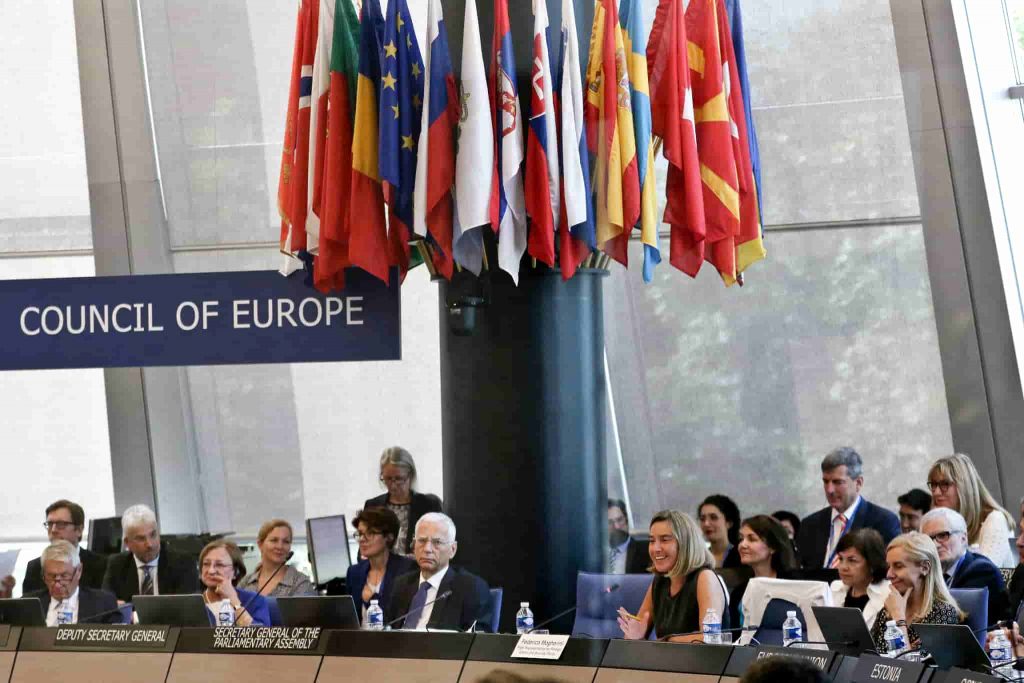
Human rights have been under attack in one way or another at nearly every single point in human history, so what has changed?
The Council of Europe is an organization that was founded in 1949 after the conclusion of the second World War. The council is composed of 47 member states with 27 of those states also being members of the European Union. The council operates on the mission of protecting and preserving human rights throughout its domain. This council was formed so that no atrocities such as those seen during World War II, would ever occur again. Since its inception, the Council of Europe has expanded to include six smaller councils and assemblies that actively work towards achieving goals such as abolitioning the death penalty, supporting children’s rights, ensuring fair and equal elections, and fighting for equal access to healthcare.
In the fifty three years since the founding of the Council of Europe, there has been measurable and tangible levels of change. Compared to the fifty seven years since the founding of the United Nations, the Council of Europe is lightyears ahead in terms of creating change and maintaining it. The United Nations has a membership base of one hundred ninety three countries, nearly four times the number of member countries that the Council of Europe has. The differences between the two organizations are baffling, as it appears the Council of Europe is far more advanced and organized, as well as the fact that the Council has made official legal and political choices to show that it will not be swayed by money and fear mongering.
On March 15th, 2022, the Council of Europe brought forth the decision of expelling the Russian Federation from the council. This is something that has never been done before in the Council of Europe, the United Nations or even the European Union. It is simply something that has never been done until now. The Council of Europe has taken a huge step in expelling Russia, but on that same day, Russia announced that it would be withdrawing from the council. It was stated that the council’s decision came from observations of Russia’s aggression against the Ukrainian people, as well as the country’s poor treatment of its own people. The statements that have been released by the Council show that it is taking a stance against the Russian government and its leaders, while sympathizing with the Russian people. This expulsion could mean a lot for the worldwide community and may have some large impacts on other international organizations.
The Council of Europe is dedicated to, “Protection of Human Rights, Promoting Human Rights, Ensuring Social Rights”, this motto is a pinnacle of what the Council of Europe strives to achieve, and shows that major organizations can in fact take a stance against a power-hungry country like Russia. After a massive decision like this, it begs the question, why can’t other organizations (like the United Nations) make this choice?
The answer is actually quite simple: They are afraid. They are scared of the possible repercussions they would face from Putin and leaders like him. But most importantly, they do not want the money to run out. Russia and its elite are huge contributors to much of the money at play in the international economy and organizations like the United Nations are very much aware of that, they also recognize the atrocities being committed by Russia and countries it is allied with. With the knowledge and power to stop this vicious cycle, it is baffling that we still allow these actions and behavior.
Is money worth more than human lives?
The answer to that question is obvious. Human rights should be a main concern for every single international organization, but so far the Council of Europe has been unique in its resistance to Russia’s assault. The situation between Russia and international governing organizations are still developing, but the Council of Europe has made the bravest moves so far. Hopefully in the near future, others will follow the lead.
Breaking the Glass Ceiling: Women in India are not Behind
By Sailaja S.P
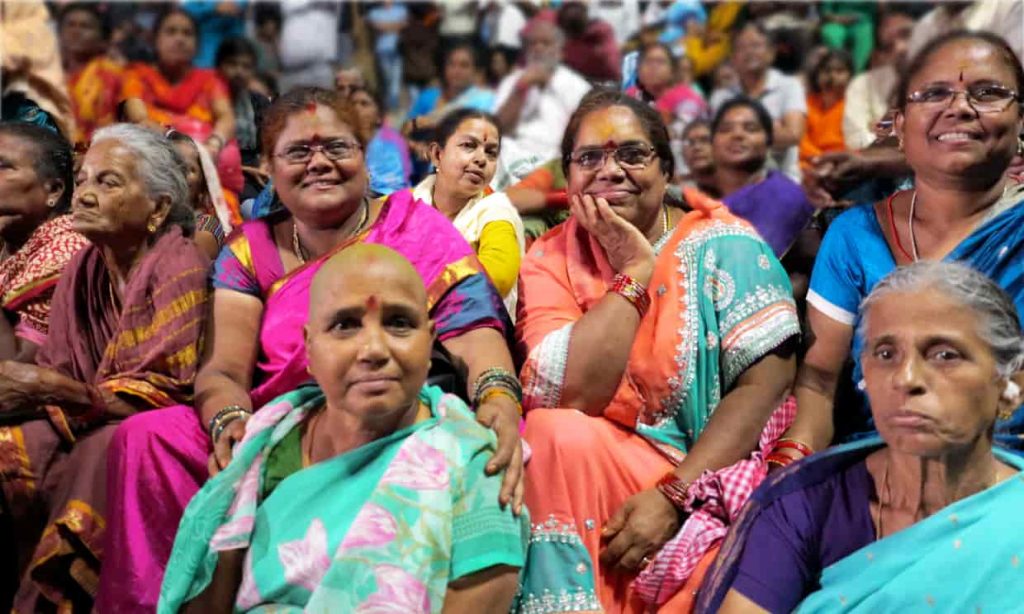
Glass Ceiling Effect in the West
In the late 20th century, women in other parts of the industrialised world had also experienced what is popularly known as the ‘glass ceiling’ phenomenon, which meant that women found they could only rise to a certain level in corporations and no further. This raises two immediate questions. What were the reasons that could have led to such a thought? And, were men keeping women away from the top?
The answer is a diplomatic one: yes and no; but with reasons to substantiate them. Yes, as men did not seem to realise that women are — and can be — as capable as men. Men had trouble accepting that women do not function like them because they are raised differently – gender versus sex – and this can be their strength and an asset to the corporation. And no, because women too have been socialised to believe that their world is in their home and family. The male values they encounter in the workplace are often alien to them. However, what they see as behaviour unlike theirs can also be a source of strength for them and a learning opportunity. Nevertheless, not having the skills to cope with this environment, they often opted out. So somewhere they were stuck in the middle level management and soft functions only.
More than three decades ago women in the west and developed countries were fighting glass ceiling syndrome while in India women started working in various spheres and sectors and marked their presence in the green pastures of the corporate world!
East Follows West – India Faces the “Glass Ceiling”
We, in India, are witnessing the Glass Ceiling syndrome two decades or so after the west experienced it and we have ‘emerged as winners’. The good part is like a “wise man” we have the advantage of learning from the past or rather access to best practices available… Thanks to the internet and Google, the problem and the solution is right in front of our eyes. From a mere 3% of women in “senior positions” in India in 1992, we are today in double digits, with 31% in senior positions, of which 15% are CEOs.
Things have changed, today’s corporate world is a level playing field – more and more women are leading from the front, breaking the Glass Ceiling syndrome. Leadership requires essential qualities and essential skills. Neither can be neglected. Women were behind men in the past and to an extent even at present, but there is no reason why they cannot be equal now and in the future. Women today have already learnt to balance work and personal life and know how to handle tough situations and have to some extent started to think like men (a positive sign).
With the help of social reformers, the Indian woman has slowly started recognising her true potential. She started questioning the rules laid down for her by society. As a result, she started breaking barriers and earned a respectable position in the world. Today Indian women have excelled in each and every field from social work to space station expeditions. There is no arena, which remains unconquered by Indian women. Whether it is in politics, sports, entertainment, literature or technology, everywhere we can hear applause for her. Therefore, the corporate world is likewise a platform for women to prove their abilities.
Evolving Women: Overall and in the Corporate World
The status of women has changed considerably. Women have made significant strides in all fields, although their number remains insignificant. We need to eliminate some of the traditional hurdles to acquiring any type of skills (without distinguishing them as doable and not doable) and also dissipate old prejudices. The diagram below depicts the evolution of a woman over the last few decades:
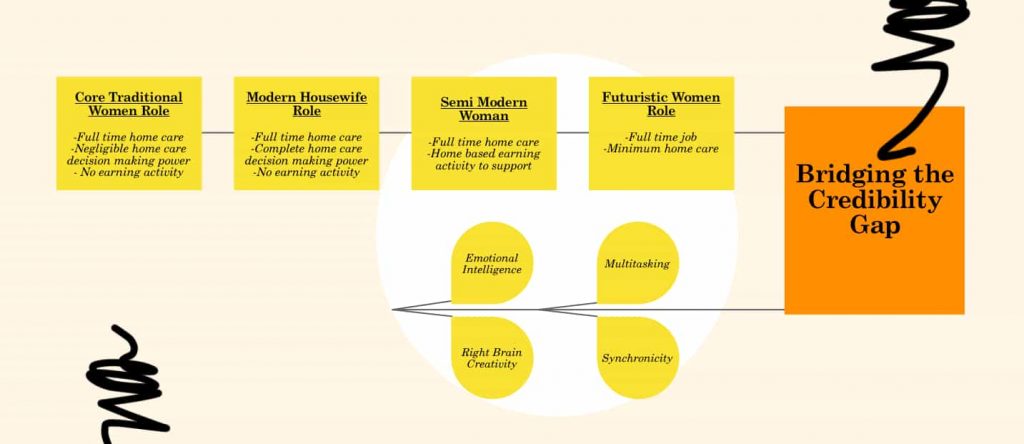
Not only has she evolved as a woman over the years but has overcome the hurdles (both personal and social) to pave a path for herself in the male dominated corporate world.
Growth and comfort cannot coexist so women have to move out of their comfort zone to reach their goals in the future.
Way Ahead
At the outset it seems that we are at par with men in the corporate world, which is a positive sign in the whole gamut of bridging the gap of credibility. So are we already at the helm of the corporate world? Have we crossed the road blocks on our road to success and growth? The answer is ‘maybe’ because personally I feel we have crossed the stage of teething problems and in the next decade or so we should see men and women in a 50:50 ratio in handling higher positions and responsibilities…Wo’man: the word itself is more than ‘man’! If this continues… From Eligibility To Credibility Women is a Reality!
All it requires the same amount of passion and perseverance towards career as we are showing today.
“I entered the university and my heart is leaping with joy!” — An extracts from a refugee’s journal
By Atika Harba
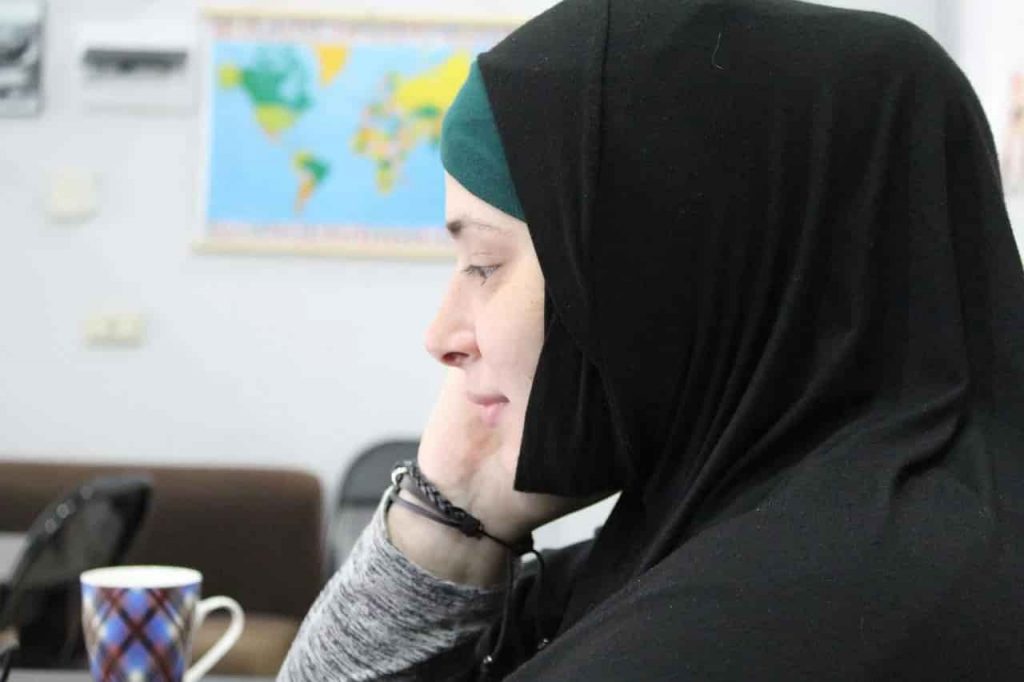
During the days of the war in Syria, we lost our safety. We used to sleep to the sound of cannons and wake up to the sound of planes. One day, my mother asked me to go to the pharmacy near our house to buy a fever-reducing medicine for my little brother; while I was on the way back with my little sister, a shell fell in front of us. The people on the street started running to see what happened. We did not stop running until I got home, and we survived. This is one of the most difficult memories that stick in my memory and cannot be forgotten.
I woke up this morning to the happiest day of my life. After all the difficulties I faced, I picked up my papers and went to the Lebanese University to register. Finally I have reached my life’s dream. After fifteen years of studying, I entered the university and my heart leaped with joy. I submitted my papers and took my acceptance receipt and left with a smile on my face. That is my dream came true.
Today is not like other days. It is the day children return to school after having been absent from it for two years. I saw them all around, with their bags on their backs and big smiles on their faces. They are happy because they will be able to learn. They are happy because they will be able to play, play school games again. Unforgettable school days.
Today, I went with my mother to the market and on our way we saw a child sitting on the sidewalk and selling sweets to other children. We approached him and asked him why he was selling sweets, seeing as he was just a small child. “Why don’t you go to school like the rest of the children?” He replied that he had to work to buy medicine for his mother and bread for his family. “I am not the only one who works,” he said “there are many children who work like me…”
During her internship with UN-aligned, Atika Harba was asked to write about her life inside the refugee camp in Lebanon. Her experiences, along with those of other refugees are published in a new series titled Diaries from Refugee Camps.
Edward Morgan Forster: Life and works
By Alex Liberto, The Gordian Literary Editor
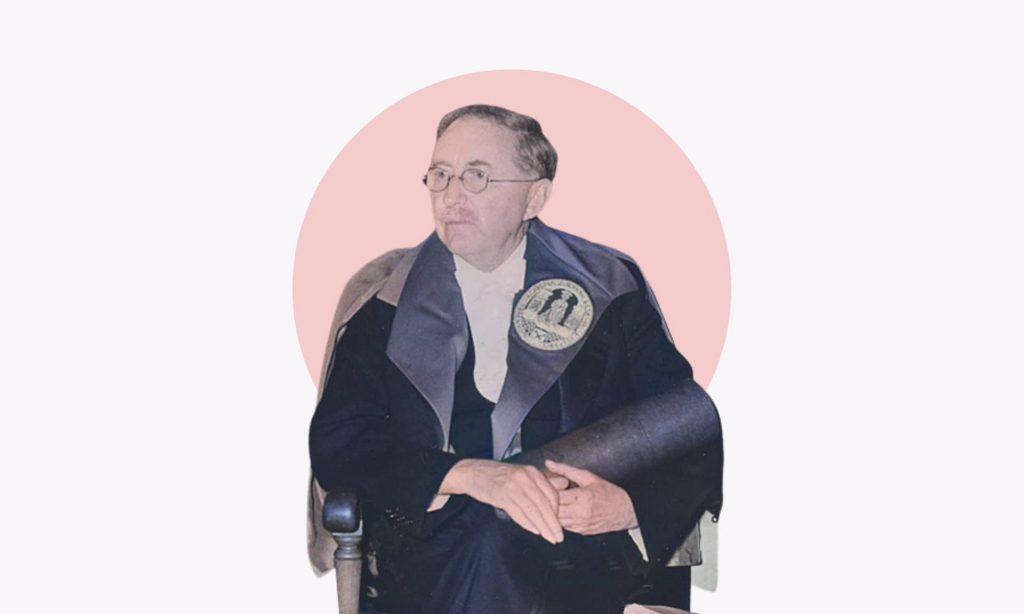
Edward Morgan Forster was born in London on the 1st January 1879. His family was typically upper-middle class. Edward Forster senior was a Cambridge graduate architect and Lily, his wife, was the adopted child of a rich family. However, when E.M. Forster was still a baby, Edward, his father, died of tuberculosis leaving his only son in the care of Lily. The child was brought up only by women, a fact which was to influence his formative years. After his father’s death, mother and son moved to Stevenage in Hertfordshire. There they lived in a large house in the middle of the English countryside, visited only by Lily’s female relatives and friends. Lily and her son developed a deep and loving relationship. In later years Forster wrote that his mother had given him “a sort of rich subsoil where I have been able to rest and grow”.
When Forster was only eight years old his great-aunt, who had been a frequent visitor to their house, died leaving him a large sum of money. Everything was perfect for Forster, almost idyllic. But at the age of fourteen the owner of their beautiful house in Stevenage refused to renew the lease and the two had to move to Tonbridge in Kent. Here Forster’s life changed drastically. He was very unhappy at the public school he was sent to. His fellow students teased and tormented him because of his graceful and not typically boyish character. One of these students remembered later on in life: “Forster? A little cissy. We took it out of him, I can tell you”.

Forster then went to King’s College, Cambridge, where he was introduced to many intellectual groups, especially to the Apostles and to the members of what was later to become the Bloomsbury Group. It was at Cambridge that Forster came to terms with his own homosexuality, in particular thanks to the open discussions he used to have on the subject with the members of these groups, like Bertrand Russell, H.O. Meredith, Virginia Woolf and her husband Leonard.
After leaving Cambridge in 1901 he remained very close to Meredith, who he considered as being his first “great love”. Forster and his mother then travelled to Italy and Greece where he absorbed every feeling and emotion, cultivating them for his creative future as a writer. After a few months in Germany, Forster returned to England where he met a handsome young Indian man called Syed Ross Masood. The two developed a very deep friendship which was to last until Masood’s death in 1937. The importance of Masood’s influence on Forster is clearly evident in Forster’s own words about his friend: “He woke me up out of my suburban and academic life, showed me new horizons and a new civilization”.
Forster had visited the “new civilization” in 1912. India naturally gave him all he needed for his masterpiece A Passage to India, which was published in 1924. By that time, Forster had already become very well-known with his previous novels, A Room With a View (1908) and Howards End (1910).
When the First World War broke out Forster went to Egypt where he worked for the International Red Cross. After returning to England in 1919, he found it rather difficult to settle back to the English way of life and therefore left for India where he remained for three years. In 1930 Forster met the man who gave him great love and friendship. This was the young Bob Buckingham. The two were lovers at first, but after Bob married, they remained the best of friends. Their friendship was so intense that Bob and his wife, May, made Forster the godfather of their baby boy, named Robert Morgan after him.
The Second World War was a very painful period for Forster who was a convinced pacifist. To make matters worse, his mother was very ill and very old and had become a great burden for him. When she died in 1945 Forster felt as though his own life had ended. She was 90 years old and he was in his sixties. As it turned out he was to live on until 1970 when he died on the 7th June at the age of 91.
Literary Career
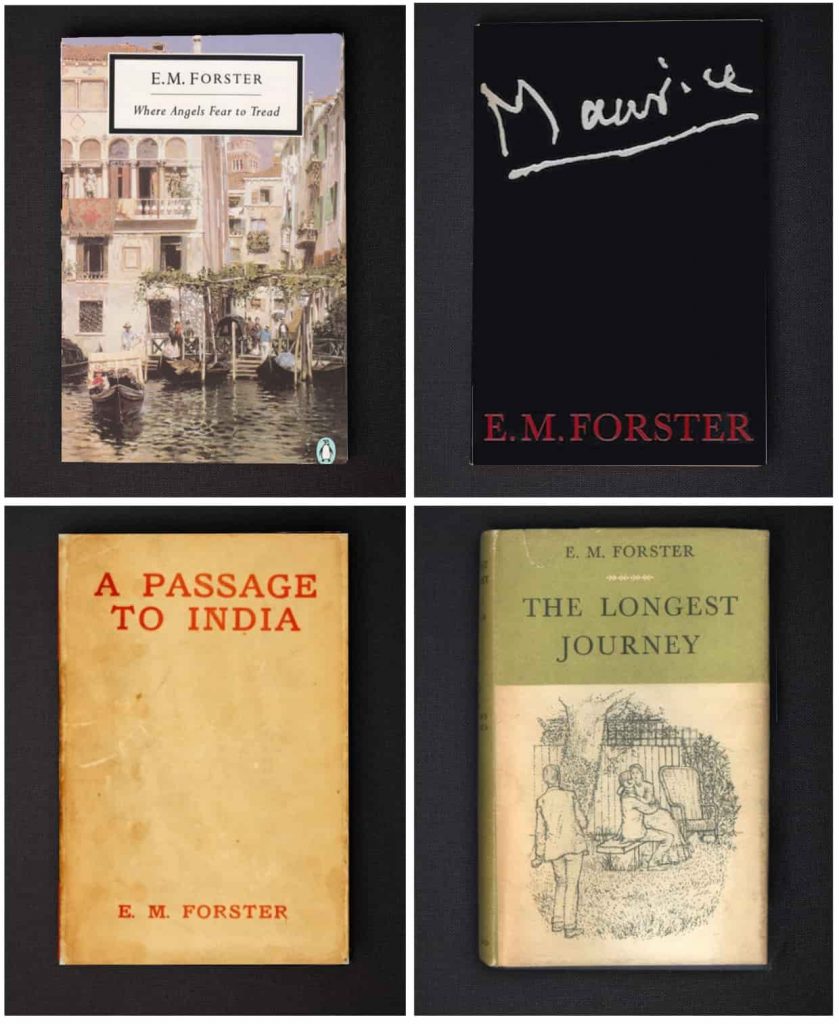
E.M. Forster’s first novel, Where Angels Fear to Tread, was written in 1905. The title of this first book really sums up Forster’s entire literary output. The author explored the two worlds which man was constantly facing: the world of convention and the world of instinct. People may choose to follow whichever, but both alternatives have their price. His second novel The Longest Journey, written in 1907, attacked British life with his biting satire on the narrow-mindedness and pettiness of public school.
Like Where Angels Fear To Tread, Forster’s third novel, A Room with a View, published in 1908, was partly set in Italy. As in his first book, Forster showed how this totally different Mediterranean culture helped exorcise typically British taboos.
In 1910 Forster published Howards End. This novel also focused on conflicting values. The story explored the lives of two distinct families, the Schlegels and the Wilcoxes, and their different cultural backgrounds. The issue in question was culture as opposed to business. In 1913 Forster wrote Maurice, a beautifully touching story on homosexual love. In this story two homosexual lovers chose different paths. One followed his instinct and accepted his homosexuality, freeing himself from the chains of social convention. The other, on the contrary, followed the “right” path and got married, sacrificing in that way his spontaneous and instinctive nature.
Forster’s last and best-known novel, A Passage to India, was published in 1924. The dichotomy in this novel focused on the differences between the British and Indian cultures, showing how racial prejudice can lead to misunderstanding , thus affecting personal relationships.
Style and Themes
Forster excelled in creating that particular dichotomy which he believed was a typical feature of man’s life. His complex characters were always torn between two different cultures, or two opposing values, or two conflicting planes of living. All his novels focused on the difference between instinct and convention. The world of convention he described with masterful satire and wit, while the world of instinct he described with emotion and heartfelt tenderness.
Forster’s characters were outstanding creations of psychological depth and complexity. Their tumultuous journey developed with subtle emotional depth and the eventual realisation and fulfilment was always the outcome of painful and turbulent doubts and contradictions. Through his characters’ emotional struggle, Forster showed that human beings should always accept their natural feelings without being chained to false morality or social convention.
Forster’s language is simple although very polished and mellifluous. In both his descriptive and narrative style he is clear and to the point. He never beats around the bush and even in his use of satire he is neither cryptic nor complicated. Forster also uses humour throughout his work and this often gives his novels that touch of light-heartedness which softens the seriousness of their content.
Edward Morgan Forster was awarded one of Britain’s most important decorations, the Order of Merit, and is today considered to be one of the leading writers of the 20th century.
A Passage to India
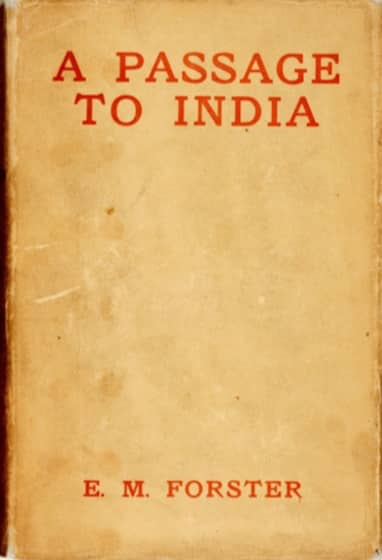
A Passage to India is considered to be Forster’s masterpiece. The novel investigates the possibility of reciprocal understanding and tolerance among people, in a country torn by internal conflict.
Forster drew inspiration for the title from a poem by the American poet Walt Whitman (1819-1892), entitled Passage to India. Forster’s novel is divided into three parts – Mosque, Caves and Temple – each having a different narrative and symbolic function. In Mosque Forster explores the possibility of friendship between the English and the Indians; in Caves, this friendship is viewed as being intricately strenuous and finally, in Temple there is hope for a reconciliation.
The novel opens with a description of Chandrapore, where the story is set. It is presented as an unattractive town where an English community lives. Dr Aziz lives and works in Chandrapore as an assistant to Major Callendar, in the Government hospital.
In her journey to India, Mrs Moore is accompanied by Adela Quested, who is evaluating the possibility of marrying Mrs Moore’s son, Ronny Heaslop, the local magistrate.
When both Adela and Mrs Moore express their desire to know more about the real India, Mr Turton, the town collector, organises a party in order to bring the two cultures together. The party, however, proves to be a failure because of the lack of communication between the two groups. At the party, Adela and Mrs Moore meet Dr. Aziz and Mr Fielding, the principal of the government college. Mr Fielding invites them to another party at his home, where they are introduced to Professor Godbole and where Mrs Moore meets Aziz again. Azi, who is very kind and friendly, is very eager to show his friendship towards the two ladies by inviting them to the Marabar Caves, the main attraction in the area near Chandrapore.
Once in the caves, Adela undergoes a personal emotional epiphany.
She realises that she does not really love Ronny. When she hears the echo, she runs out of the caves and goes back to Chandrapore in Mrs Derek’s car. When Aziz, Fielding and Mrs Moore return from their trip to the Marabar Caves, Aziz is arrested with the accusation of the attempted rape of Adela. Fielding knows that Aziz is innocent and tries to help his friend. At the trial, after the initial confusion, Adela declares that she was not sure whether Aziz had followed her into the cave. Aziz is then freed. During the trial, news arrives that Mrs Moore died on her way back to England.
When the trial is over, Fielding takes care of Adela and persuades Aziz not to claim damages against her. This request makes Aziz suspect that his friend is going to marry Adela for her money. As a consequence of the trial, Adela breaks her engagement with Ronnie and decides to go back to England where she takes care of Mrs. Moore’s children, Ralph and Stella.
The third part of the novel, Temple, moves the setting from Chandrapore to Mau, a small independent state, where Aziz works as the personal doctor for the Maharajah.
Fielding, who in the meantime has become a school inspector, is on an inspection visit to Mau.
Aziz finds out that Fielding had not married Adela but Mrs Moore’s daughter Stella, whose brother Ralph has accompanied him to Mau. The old misunderstanding is thus eventually cleared up and the two men can be friends again.
The trip to the Marabar caves is the turning point in the story. What actually takes place in the caves is not clear, but certainly the two English ladies experience deep emotional turmoil, and Mrs Moore is so deeply affected by the experience that she loses all interest in life itself. As a consequence, her once steadfast values and her personal affections were lost in the quagmire of emotional distress. This is the effect of the echo, which is first heard in the Marabar Caves. Both Adela and Mrs Moore are tormented by it even well after the visit. The echo is a “boum” which is a haunting sound that levels everything to the same tedious monotony. It annihilates the distinction between good and evil and clouds the spiritual consciousness. The “boum” highlights the gap between the eastern civilization where life is spiritually ethereal and balanced, and the western civilization, which is based on a strong contrast between good and evil.
Critics have attempted different interpretations to explain the experience Mrs Moore undergoes within the caves. According to one of these interpretations, it is suggested that she has made a journey into her subconscious, the result of which must have been terrifying for her. Another interpretation maintains that once in the caves, Mrs Moore realised that her religious convictions and values were actually not as deeply rooted and steadfast as she had thought. The fact remains, however, that after this experience she seems to have given up on life.
The Marabar caves may be said to represent the very essence of India, with its mysteries and complexities.
The last judgement of Michelangelo Buonarroti
By Carla Pietrobattista, Art Editor of the Gordian
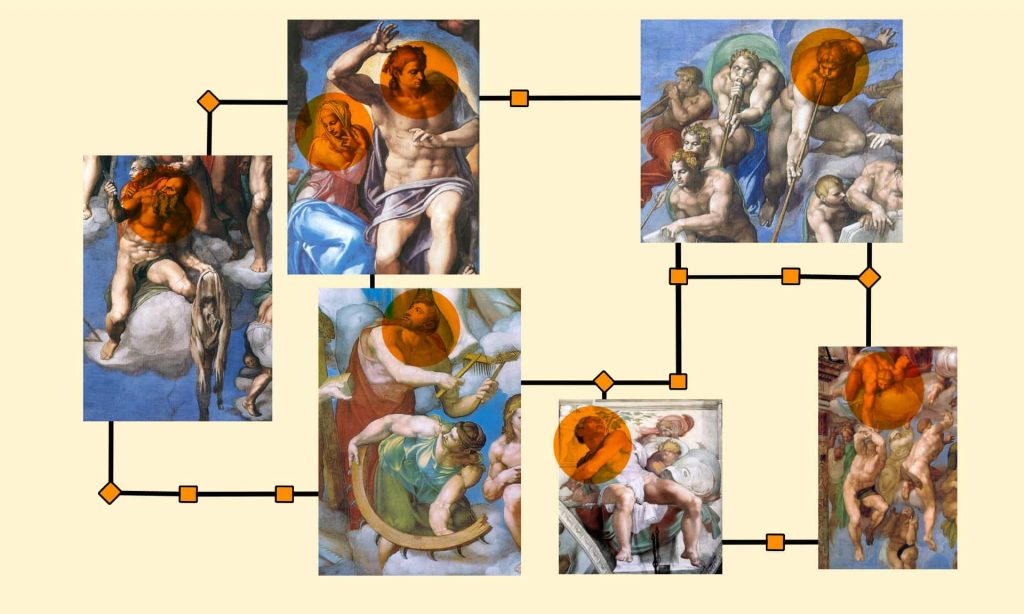
It is amazing how the mind and hands of artists make abstract and elusive concepts visible. I’m talking about all those stories whose origins are lost in the mists of time: mythological stories, religious testimonies, legends, which although familiar in terms of knowledge, lack a real visual concreteness.
The images chosen by artists to convey their thoughts, their inspiration regarding these stories, become something possible, even real, for us observers. Perhaps it is thanks to these numerous testimonies that have always accompanied us in a more or less conscious way that concepts that are difficult to understand, as they are far from our daily life, become less cryptic and even, as already mentioned, familiar.
Let me give a concrete example: each of us has a certain image with which to evoke the moment of creation, yet none of us have witnessed the birth of life, whose complex dynamics of development have been explored conceptually by almost all religions even before being theorised through rigorous scientific studies. It is precisely thanks to this transposition and religious theorisation of concepts that true masterpieces of art were born, which gave us the feeling of having somehow witnessed the most mysterious moments in human life. This feeling, combined with a question of personal taste, led me to choose to speak of Michelangelo in the past, examining that image celebrating the mystery of the birth of life: the creation of Adam.
The numerous and varied creations of the artist allows me to observe another moment shrouded in mystery: the last judgement, which in fact presupposes the end of the wonderful creative process examined in the previous article Like Rings in The Water: Dante’s impact on Michelangelo. As in the case of the fresco of creation, this too was made for the Vatican, therefore under papal commission, in particular that of Pope Clement VII.
How Michelangelo created the last judgement
Placed on the wall behind the altar of the Sistine Chapel, this work, like almost all those signed by the master Buonarroti, is universally known. The fresco was requested by the pontiff to conclude the biblical accounts and stories of the apostles already present in the chapel. In addition to being already involved in many construction sites, the artist was no longer very young, yet he still accepted the challenge. Upon the death of Pope Clement, the commission was renewed to Michelangelo by the new pontiff: Paul III Farnese.
The realisation of the work involved difficult choices, which were not directly linked to his genius as an artist. One of the main challenges, in fact, was having to make room for the majestic fresco. Buonarroti opted to have images already present on the wall destroyed and this was followed by a quarrel with Sebastiano del Piombo who until then had been a precious collaborator of Michelangelo. Sebastiano, assuming a lack of strength of the now elderly master, with the support of the Pope, had the wall prepared not for a fresco but for an oil depiction. Michelangelo did not even take this working hypothesis into consideration and had the preparation, which had already been made, destroyed in order to make room for the arriccio, the necessary basis for the fresco technique. Michelangelo was not prepared to let his advanced age limit his expressive genius, irrespective of what others assumed.
The artist spent 450 working days to finish the work
In fact, Michelangelo, apart from the help of attendants who worked to prepare the colours, worked alone on the creation of this fresco. He climbed the scaffolding to begin his work during the summer of 1536 and finished it in 1541. The artist spent four hundred and fifty working days (the duration of which was actually quite limited because it was linked to the fast drying times of the wall), working in horizontal bands from bottom to top. In addition to the imposing dimensions, the grandeur of the fresco was also obtained thanks to a novelty in the setting of the overall image that does not appear limited by frames or divisions, but expands on the wall without being contained or delimited by obstacles.
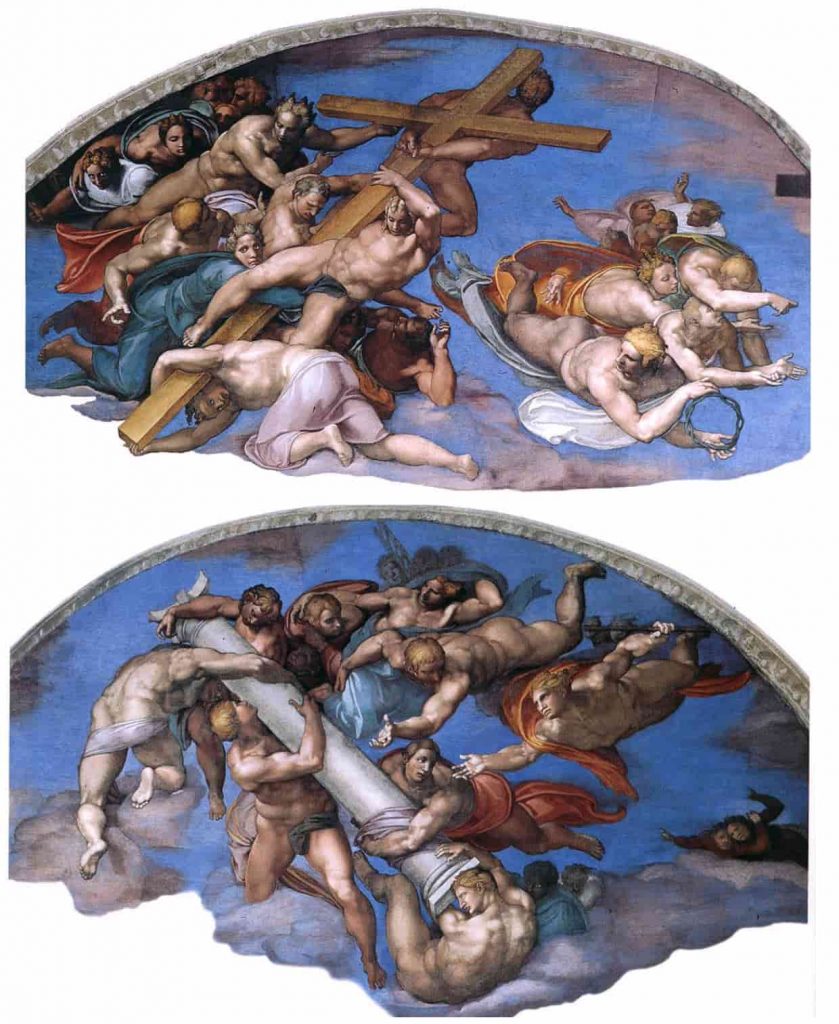
Every single element contributes to creating perfection and greatness
Within this huge space, figures of various sizes are inserted, depending on the position they occupy. The largest ones that exceed two metres are placed at the top, while the other smaller ones, which are about one metre and fifty in length, occupy the lower part of the wall. Observing a work of art live is always an experience that is perceived as an epiphany, a manifestation of thought and feeling and the overwhelming emotion in front of the universal judgement is just this. There is the awareness of grasping the maximum expression of a thought. Each character is clearly part of an overall discourse, but each could have an independent existence with respect to the context of the work. Each face in fact lives and transmits its emotion, its story. There is a great sensation of movement, in the intricate ups and downs along the wall, to the point of having the sensation of witnessing, and even taking part, in a tumult that is not only an inner tumult of the subjects depicted, but a whirlwind of mostly naked bodies.
The scene, clearly of a religious setting, is in fact a pictorial transposition of John’s Apocalypse, but at the same time it is a symbol of the eternal struggle between good and evil. A fight that physically manifests itself in the lower part of the scene, where the souls are flaring between angels and demons. However, it is also and above all an inner struggle, as is clearly evident from the tormented expressions of the souls awaiting judgement. The subject of the Apocalypse had already been widely “told” by mediaeval artists, yet Michelangelo’s interpretative key is so different that it is almost an absolute novelty.
In fact, the scene is seen from the eyes of a man who had lived the Renaissance in an active and conscious way, and who was now fully experiencing the historical and intellectual changes of his time. Furthermore, we must not overlook the fact that Michelangelo, who was a well-rounded intellectual whose culture covered every field, was able to bring the “modalities” of one of the masterpieces of secular literature: Dante’s Divine Comedy into the picture.
Read more: Dante’s impact on Michelangelo
Indeed, one of the figures in the fresco probably represents the great poet himself. In fact, it is from the description of the three kingdoms of Dante that the setting of the entire scene is most likely born, which instead of dwelling on the representation of faults, as was the norm in the past, focuses on the awareness of guilt.
Last judgement analysis
For a simple observer the scene appears immediately for what it is, without necessarily needing explanations or interpretative mediations. In fact, the main message is widely expressed through a skilful use of gestures and, as already mentioned, in every single expression of each of the characters (about four hundred figures). Obviously the master Buonarroti has left nothing to chance and despite this basic intuitiveness, there is a precise interpretation: as for the reading of a text, the fresco must be examined starting from the top left.
The first figures you meet, those that as already indicated above exceed two metres, are depicted inside lunettes and represent angels in flight or in any case suspended in the air, which support the instruments of the passion of Christ: on the left the cross , while on the right the column of the flagellation.
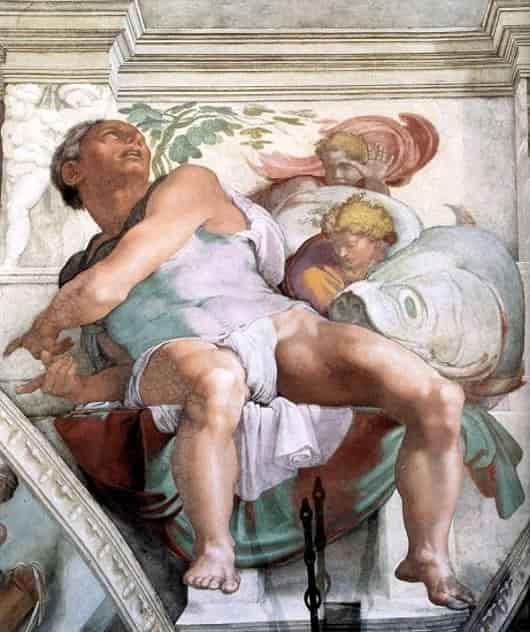
Furthermore, we must not forget the figure represented outside the main scene, at the intersection of the two lunettes that contain the angels, because in this space, seated on an architectural detail, we find the prophet Jonah represented. He is easily recognisable because depicted next to the sea animal in the belly of which he had remained for three days. These three days and three nights of Jonah are a symbol of the resurrection of Jesus which took place on the third day after his death. All these elements have been represented to highlight the true protagonist of the judgement scene which is Jesus, placed at the centre of the fresco, with Mary, his mother. The two are enclosed in the typical almond-shaped space very often reserved for them. In this case, however, the almond is not depicted through architectural elements or lines, but is made using the curvature of the bodies depicted on the right and left of the characters framed here.

Christ, as judge of humanity, is depicted with a setting that is far from traditional Christian iconography and closer to classical sculptural language. The body of Jesus appears in fact with the physical characteristics of the heroes of classical literature, muscular and with an authoritarian air. Every gesture is specially designed to emphasise his muscles, without losing sight of the elements of faith. The arms of Jesus in fact, thanks to their different inclination, highlight the wounds inflicted by the nails and therefore his passion, and it is precisely by virtue of his divine nature and his sacrifice for men that he is now in judgement and as such his expression can only be severe.
Mary, his mother, is beside him. She is both near and far at the same time: the head of the Virgin and her gaze are in fact opposite to those of her son. This inclination balances the scene, but above all it expresses a deep awareness, because Mary is experiencing a moment in which she can no longer intercede for the souls who turn to her. It is the final judgement and this rests on her son alone.
On the sides of the central almond a host of saints attend and take part in the moment; many of the saints depicted are holding the instruments of their martyrdom in their hands. Souls are ascending to the top despite the demons who until the bitter end try to block them and to drag them down. Under the central almond a group of angels announces the arrival of the Apocalypse with trumpets, at this sound the bodies of the dead leave their tombs.
I find that even here, in this last section of the fresco, every single expression is an authentic masterpiece. In fact, all the wonder of those who awaken from the sleep of death shines through and there even bodies that are not yet clothed in flesh. The tumult of the lower floors is different from that of the upper part of the fresco, because it is full of anguish given the strong presence of demons. It is in this section that Charon’s boat is also depicted, portrayed in the act of ferrying souls of the damned while he beats them violently.
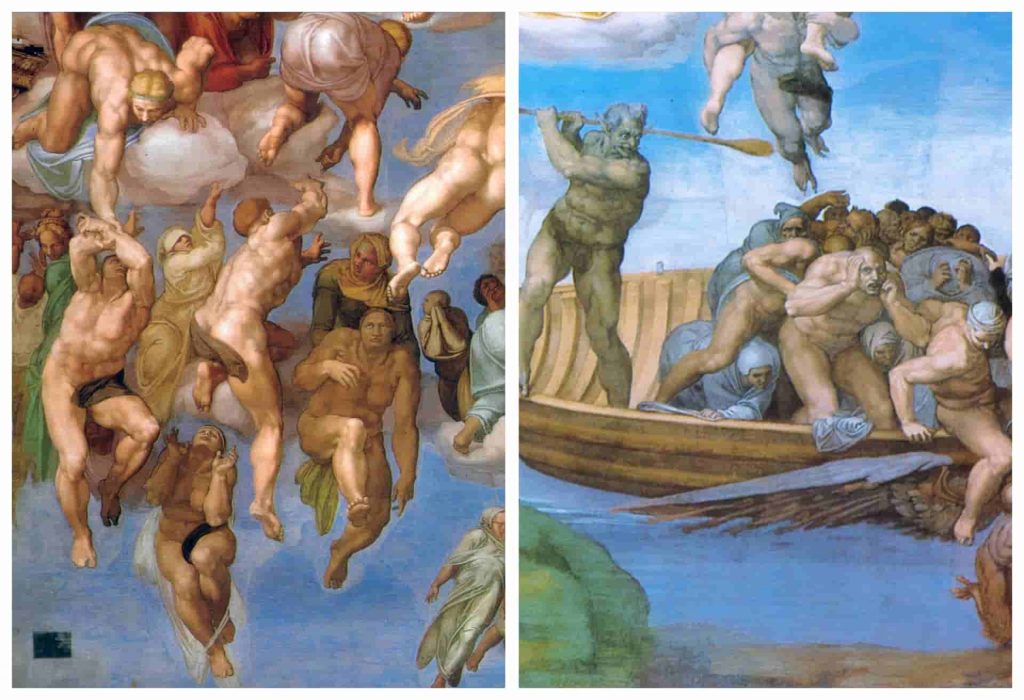
The vision of this fresco, has aroused many arguments and conjectures, but it would be impossible to cover them all here, so I will only focus on some of the pictorial elements that have always fascinated me.
Where is Michelangelo’s signature? One of the features that stands out is the “signature” of Michelangelo which, interestingly, is not written but represented. In fact the artist has left a memento of himself within the scene in the detail of the skin that Saint Bartholomew holds in his hands.
Some critics have expressed some uncertainty about it, but for me there is no doubt that it represents Michelangelo; firstly, because the face depicted on the skin corresponds to other images representing the artist, and secondly, because Michelangelo, who always paid attention to the details of every single muscle of his characters, would certainly never have painted a bald Bartholomew, holding an image that was supposed to represent him, with hair on his head (his martyrdom involved being skinned alive).
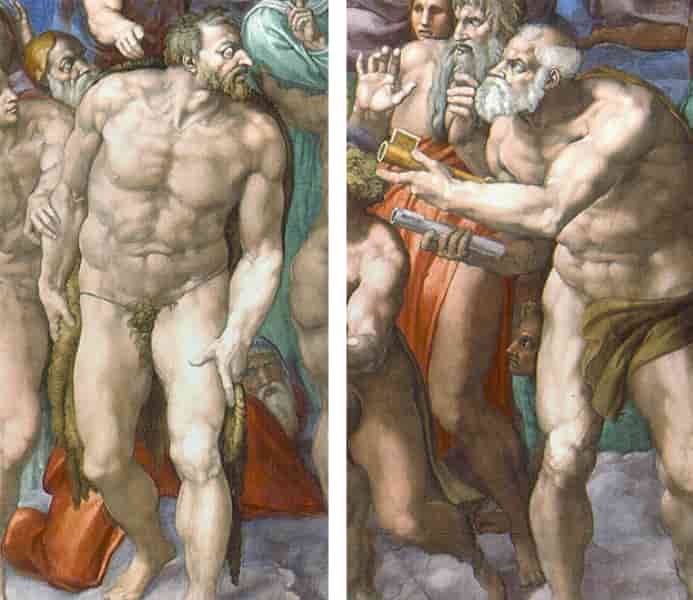
Was the last judgment censored? Another element that I judge to be really important is only partially linked to the observation of the work; it relates to the considerations and events that have accompanied the masterpiece over the centuries. The fresco that each of us admires today was, in ancient times, seen as a cause for shame. In fact, from the moment the scaffolding was removed, there were those who marvelled at the complexity of the layout, and those who, on the other hand, shouted “scandal!” for nudity depicted. After Michelangelo’s death, his work was subjected to censorship. The naked bodies were covered by drapery which was only partially eliminated during recent restorations. This is certainly the point that has always struck me most, because I firmly believe that this censorship, certainly the daughter of the narrow-mindedness of the time, is above all the daughter of a totally wrong way of understanding the work.
The idea of final judgement can only be rendered through nudity.
In the course of their lives, people try to dress up their weaknesses in an obstinate search for external decorum: a perfection of form which, however, too often is not a perfection of substance. This decorum, or rather this show of it, built with attention and clear awareness throughout one’s life, fades at the moment of judgement. When we are no longer the judges of ourselves, this charade is swept away by the truth that makes us naked in front of our deep nature and the tally of our actions.
Where water is a gift: The outskirts of Nairobi in pictures
By Anahita Ahmadi, Senior Photographer of The Gordian
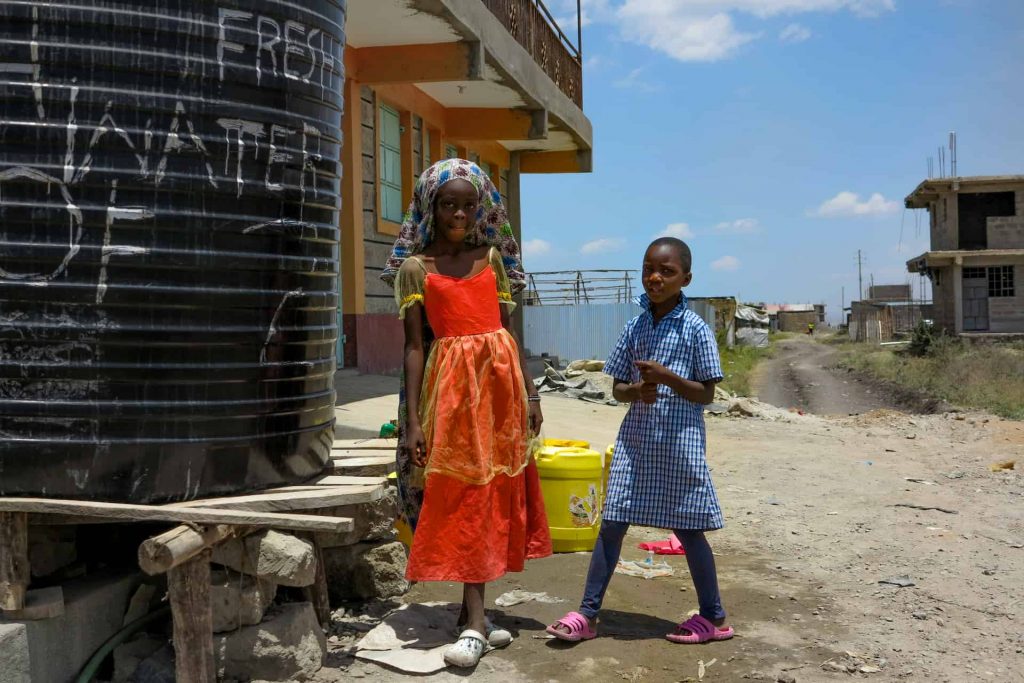
Do you know who it is? The Gordian May Quiz
By Katharina Wüstnienhaus, Puzzle Creator for The Gordian


